
Medicine in the Veda: Religious Healing in the Veda
Book Specification
| Item Code: | IDD251 |
| Author: | Kenneth G Zysk |
| Publisher: | Motilal Banarsidass Publishers Pvt. Ltd. |
| Language: | English |
| Edition: | 1996 |
| ISBN: | 9788120814011 |
| Pages: | 349 (1 Map) |
| Cover: | Paperback |
| Other Details | 8.9" x 5.9" |
| Weight | 500 gm |
Book Description
From the Jacket
Tracing the history and evolution of Indian medicine is a complex enterprise. Continuities of doctrine and practice rarely occur, preventing historians from positing an unbroken succession of development from earliest time. Until now most commentary had focused on later stages of Indian medical science that feature approximate analogies to the Hippocratic and Galenic systems. This volume looks back to the earliest period (1200-200 B.C.) in which a clearly discernible medical tradition can be ascertained, providing a comprehensive analysis of the healing lore contained in the ancient Vedic texts.
The book is divided into two sections. The first examines the various internal and external diseases that afflicted the Vedic people and the treatments used to cure them. Zysk includes translations of particular hymns devoted to the eradication of specific illnesses and to the consecration of medicines. The second part encompasses textual annotations to the individual hymns together with extensive cross-references to other Vedic texts, and a valuable bibliographic essay. Without minimizing its magical-religious roots, Zysk shows how Vedic medicine relied on close observation of phenomena in order to develop its unique form of mythical and religious classifications as well as how the healing system reveals a basic understanding of the relationship between humans and their environment.
About the Author
Dr. Kenneth G. Zysk is professor of Near Eastern Languages and Literatures at New York University and Director of the Indic Traditions of Health Care at Columbia University. He is General Editor of the series on Indian and Tibetan medicine with University of California Press, and is Secretary General of the International Association for the Study of Traditional Asian Medicine.
He received his Ph.D. in Asian Civilisations from the Australian National University in 1981 with a dissertation on Medicine in the Hindu Vedic scriptures. He has taught Indian religions and history, and Sanskrit at numerous universities in the US, Canada and France, and has received a fellowship from the Wellcome Institute in London, and grant from the NIH for a study of asceticism and healing in ancient India: medicine in the Buddhist monastery.
He has been studying Indian medicine for over 15 years and has written extensively on the history and principles of Ayurveda.
His books include: Asceticism and Healing in Ancient India: Medicine In the Buddhist Monastery, and Religious Healing in the Veda with translations and annotations of Vedic medical hyms.
From the back of the Book
Select Opinion
The publisher, who are one of the leading indologists have been publishing such rare books for the last more than ninty years and thus serving the Planet Earth with very rare information and knowledge of the past. This volume is one such book on the Indian Medical Tradition of the hoary past.
Author Dr. Kenneth is a professor of Near Eastern Languages and Literatures at New York University and Director of the Indic Traditions of Health Care at Columbia University. He is General Editor of the series on Indian and Tibetan medicine with University of California Press and is Secretary General of the International Association for the Study of Traditional Asian Medicine. He did his doctorate on Medicine in the Hindu Vedic scriptures. Has been studying Indian medicine for over 15 years and has written extensively on the History and principles of Ayurveda.
This volume looks back to the earliest period-1200-200 B.C. in which a clearly discernible medical tradition can be ascertained, providing a comprehensive analysis of the healing lore contained in the ancient Vedic texts.
The book can be divided into two sections. The firs section examines the various internal and external diseases that afflicted the Vedic people and the treatments used to cure them. The author includes translations of particular hymns devoted to the eradication of specific illnesses and to the consecration of medicines.
The second section encompasses textual annotations to the individual hymns together with extensive cross-references to other Vedic texts, and a valuable bibliographic essay. Without minimising its magical-religious roots, the author shows how Vedic medicine relied on close observation of phenomena in order to develop its unique form of mythical and religious classifications as well as how the healing system reveals a basic understanding of the relationship between humans and their environment.
This volume has been enriched by insertion of translations and annotations of medical hymns from the Rigveda and the Atharvaveda.
Since its publication in 1985, Kenneth Zysk’s study of medicine in the Vedic texts has established itself as a classic of the genre. It is an honor and a pleasure that this book should launch this new series It is also particularly appropriate that this new publishing venture on the Indian medical heritage should be inaugurated by a work which examines the earliest textual evidence of medicine hi India.
In its previous incarnation as a publication of the American Philosophical Association, Zysk’s book did not reach a wide audience in India, and I ... sincerely hope that its appearance now will rectify this situation, enabling readers in India to take advantage of some of the best contemporary scholarship on the history of Indian medicine.
It will not escape notice that more than half this book consists of textual annotations. These notes are vital to the project that Zysk undertakes, of excavating all possible medical information from the Samhitas and immediately related texts. The reader should not be tempted to skip this information: only by working through the full text and annotations does Se rich, complex, and multi-valent nature of the Vedic medical situation emerge. History, one might paraphrase, is in the details.
Another important feature of this book is that it is the first work on medicine in the Vedic period to take account of the readings of the Orissan Paippalada Atharvaveda.
There is something of a tradition in good books about Ayurveda of acing valuable information in appendices: one thinks of Meulenbeld’s Madhavanidana, and Kashikar’s translation of Jolly’s Medizin. Zysk’s volume adheres to this tradition, and his excellent bibliography will be of enduring value to serious researchers. His bibliographical and historical essay is also a valuable survey of modern scholarship on the history of medicine, both in India and abroad. In the decade since it was first published, of course the field has moved on a little. Some new faces have appeared on the scene, and some of the projects he mentions as being in progress have now been published, including all the articles by Zysk himself listed in the bibliography as ‘to appear.’ (The reference to myself as a young scholar’ of course requires no amendment) Perhaps in another Ec3de the essay should be updated, but today it still stands as a valuable and informative overview of the principal work done so far this century.
At the present time there is a popular interest in the earliest roots of Indian culture and in particular in early Indian Scientific traditions all too easy to fall into the trap of talking about Vedic medicine as though this were an integrated medical system. But there are of course no medical texts from the Vedic period nor any evidence that such texts ever existed. The best we can do is comb meticulously through the surviving Vedic literature and try to reconstruct from text whose primary purpose was religious a picture of medical thought and practice in those far away times.
No one has done this more thoroughly than Zysk whose book I warmly commend to all scholars of the history of Indian medicine.
The medicine of the Vedic Indians is inextricably connected with their religion and must not be considered in isolation from it. Just as there is a pantheon of gods, there also occurs a pantheon of demons in the Vedic religious tradition. Our aim is to understand the particular group of demonic beings and forces which were considered to have brought about disease and the religious rites by which these malady-causing demons were evicted and kept away. The hymns employed in the rites are the principal sources of information and have been translated in their entirety an examination and a translation of later ritual prescriptions provide continuity in the tradition and offer a basis for comparison with the practices found in the earlier hymns. The selection of hymns is based on the data which they contain rather than exclusively on the traditional classification of the charms offered in the bhaisajya (medical) section of the Kausika Sutra 25—36). The translations have been undertaken according to the strict principles of Vedic philology in order to assure theft accuracy. Historians of religion, historians of medicine and Indologists are given an analysis of the fundamental doctrines and practices of India’s earliest medical tradition and provided with a good basis from which to undertake further research.
The work is divided into two major sections: the first examines the various diseases which afflicted the Vedic people and the treatments used to cure tern. Translations of the particular hymns devoted to the eradication of specific maladies and symptoms and to the consecration of the medicines are offered in their appropriate places. The classification of internal and internal diseases and medicines has been suggested by the hymns themselves. The second section encompasses the textual annotations to the individual hymns. Within the notes I have included the text and translation: corresponding and relevant passages from the Paippalada recension of & Atharvaveda. I have used the texts of both the Kashmir and Orissa recessions of the Paippalida. The editions of Barret and Raghu Vira were the principal sources for the Kashmir readings.
For the Orissa readings, the first four published books edited by D.M. Bhatacharyya were consulted. Recently, Professor Michael Witzel of the kern Institute in Leiden has kindly given me the readings from most of the remaining books. They are based on photocopies and films made in Orissa, Readings from Orissa books 5-15, 17-18 and part of book 20 are indicated by O Signifying the Orissa Manuscripts and those from books 16, 19 and part of book 20 by manuscript P referring to Witzel’s photographs of a seventeenth century palm leaf manuscript written in Orya script by a certain Raghunatha Sarma. This manuscript comes from Parikula in Northern Orissa verse 16.12.5-14.7 and 16.74.8 were blurred and 19.3-19.7 were unavailable. Every effort has been made to incorporate the most recent textual informatic pertaining to the Atharvaveda.
Although some modern scholars discount the expalanations of the Sanskrit commentaries as merely fanciful contrived in an age too far removed from the time of the original to be of any real value, I have included them so that we may better comprehend how the later tradition understood the earliest notions of religious medicine, likewise their comments provide data for the history of traditional Indian medicine in more recent times. I regret that I have had to omit a section on toxicology. It is hoped that it will be published at a later date. I have in Indian medical history. Historians of medicine should find this particularly useful.
Ten years have passed since this book appeared with the title Religious Healing in the Veda, as part of the Transactions of the American Philosophical Society, Vol. 75.7. The monograph received good, sometimes excellent reviews, and is now out of print. On the whole, I was very pleased with the work, and especially with the beautiful text produced by the American Philosophical Society, which is here reproduced. My only regret is that it did not reach a wider audience. It passed by many largely unnoticed, the subject-matter of the work, although specific, has relevance beyond the narrow focus of medicine and healing. Its content is useful to students of Indian religion and civilization, as well as of the history and science and medicine. Moreover, it almost never reached the Indian scholars with whose scientific and religious heritage the study is concerned. Fortunately, this reprint edition will now have the opportunity of coming to the notice of those who previously missed it and who might well find it useful and interesting.
Although my studies have moved me into later time-frames and literary genres in order to fill in the gap between Vedic and classical Ayurvedic medicine, and more recently even into the related tradition of the India aesthetics of love, I have constantly returned to the Veda when new ideas and insights arose. Anyone who has embarked upon a study of the Veda can testify that it is a vast and fascinating subject that constantly beckons one to plunge ever deeper into its texts in an attempt to unlock the wonderful mysteries of the archaic mind. It is a life-long pursuit in which I shall always be engaged, reading and rereading the frequently enigmatic and clever hymns of the Rgveda and Atharvaveda.
Although the fundamental aspects of medicine in the Vedas are contained in the present monograph, there remain several points requiring further exploration. One important part of this healing tradition, only briefly mentioned in this work, is Vedic toxicology. Several hymns of the Atharvaveda and a few of the Rgveda concern themselves with poisoning usually caused by animals, and with the remedial measures to cure it. It is almost certain that India’s long and renowned tradition of toxicology derives from a basic knowledge of poisons and poisonous animals found the Veda. I have collected and examined the relevant hymns and passages from the early texts and hope to publish the results of my study &e near future.
My subsequent research and investigations have taken me to time periods not covered by the material in this book and have provided certain fresh ideas and a radically different interpretation of the origins of the Ayurvedic system of healing. It might therefore be useful to outline here the development of the Indian healing arts from Vedic medicine to classical ayurveda, based on my recent studies.
A distinctive part of Vedic medicine is its pharmacopoeia, especially its rich description of these substances and its knowledge of the local flora. This botanical wisdom occurs largely in the hymns of the Atharvaveda and is connected to a tradition of healing plant goddesses. The hymns of the Rgveda reveal less of a familiarity with indigenous plant life, and what is found there relates principally to a tradition of a male plant divinity. A homologization of these two botanical traditions is reflected in the mythological connections between the principal plant deities mentioned in each text, and occurs in mythical parts of the Atharvavedic medical hymns. Here are found myths of both the healing plant god Kustha, and the healing plant goddess Arundhati. Kutha was the remedy par excellence for fever (takman) and generally identified with the aromatic costus, native of Kashmir and known to have been an important export from India in the spice trade. The healing plant goddess Arundhati was used in the treatment of fractures and wounds, and is identified among others with laksa, the Sanskrit term for the resinous lac. The mythology of Kusha links him closely both with the 1gvedic plant Soma, important to the sacrificial cults, and the Atharvavedic Arundhati, significant to the medical cults. He is called Somas brother, and, like Soma, is known to have grown high in the Himavant Mountains, the birthplace of eagles, the third heaven from earth and the seat of the gods. Likewise, several of the epithets associated with Kusha are identical to those given to Arundhati. They are both perennial, life-giving, and harmless. Kusthas mythological link with Soma and his name-association with Arundhati imply a conscious effort to homologize a Rgvedic botanical tradition dominated by a male plant divinity with a medical-botanical tradition of plant goddesses particular to the Atharvaveda) This assimilation of useful (and thereby powerful) botanical knowledge concurs with the medical intellectuals general tendency to appropriate wisdom which could render their healing rituals more efficacious. Further investigations of the mythological traditions of plant divinities in the Rgveda and Atharvaveda should reveal interesting aspects of the homologization of religious ideas and help identify elements of indigenous beliefs in ancient India.
Vedic medicines dominant appeal to and reflection of popular beliefs have led to more profound comparisons between medicine in the Veda and Indo-European healing traditions. Using Georg Dumézils tripartite division of ancient Indo-European society as a convenient framework, it is clear that Vedic medicine, along with most of the healing traditions of Indo European was most appropriately a function of the third social order. The ideology of this third estate was usually represented by members of peasant communities and reflected the society’s popular folk culture. The Vedic healer’s knowledge of the local flora tends to link him to an agrarian oriented group of people and his use of magical rituals amulets and incantations reflects fundamental folk beliefs. Literature of the third order has traditionally been in the form of folklore often transmitted orally form generation to generation. In many Indo European cultures folk literature preserve the peoples cultures folk literature preserves the peoples medial knowledge in the form of folk medicine and home remedies. Being produced by learned men closely associated with the third order the healing hymns of the Atharvaveda therefore reveal one of the earliest forms of folk healing of Indo European antiquity and offer an excellent example of ancient folk literature.
| Foreword | ix | |
| Introduction to the Indian Edition | xi | |
| Preface | xvii | |
| Abbreviations | xix | |
| List of Ritual Verses Rendered | xxiv | |
| List of Illustrations | xxvii | |
| Introduction | 1 | |
| I | Internal Diseases | |
| A. Internal Diseases related to Yaksma and or takman | ||
| Chapter 1 | Yaksma (Consumption, Tuberculosis) | 12 |
| Chapter 2 | Jayanya | 18 |
| Chapter 3 | Ksetriya | 20 |
| Chapter 4 | rapas | 25 |
| Chapter 5 | Hrddyota (hrdroga) (Chest pain Angina pectoris) Hariman (Jaundice) | 29 |
| Chapter 6 | Balasa (Swelling) | 32 |
| Chapter 7 | Takman (fevers Malaria etc) | 34 |
| Chapter 8 | Kasa (kas) Cough | 45 |
| Chapter 9 | The General Removal of Internal Diseases Related to yaksma and takman | 46 |
| B | Internal Diseases not closely related to yaksma and/or takman | |
| Chapter 10 | amiva | 49 |
| Chapter 11 | Viskandha samskandha (Tetanus) | 54 |
| Chapter 12 | Ascites | 59 |
| Chapter 13 | Insanity | 62 |
| Chapter 14 | Krimi (worms) | 64 |
| Chapter 15 | Urine Retention (and Constipation) | 70 |
| II | External Diseases | |
| Chapter 16 | Broken Limbs and flesh wounds | 72 |
| Broken Bones Fractures and wounds | 72 | |
| Flesh Wounds characterized by bleeding | 75 | |
| Chapter 17 | Blood Loss | 79 |
| Chapter 18 | Skin disorders | 81 |
| Kilasa (Discoloration of the Skin Leukoderma) | 81 | |
| Apacits (Rash with pustules) | 82 | |
| Hair Loss | 86 | |
| III | Medicines | |
| Chapter 19 | Water (ap) | 90 |
| Chapter 20 | Jalasa Rudra’s Medicine against Rudra’s Diseases | 93 |
| Chapter 21 | Simples | 96 |
| Textual Annotations | 103 | |
| Appendix I | Sanskrit Names of Plants with Botanical Equivalents | 257 |
| Appendix II | Bibliographical Essay | 261 |
| Specialized Bibliography | 277 | |
| Indices | ||
| Index of Sanskrit Text Places | 291 | |
| Index of Sanskrit Words | 300 | |
| General Index | 308 |
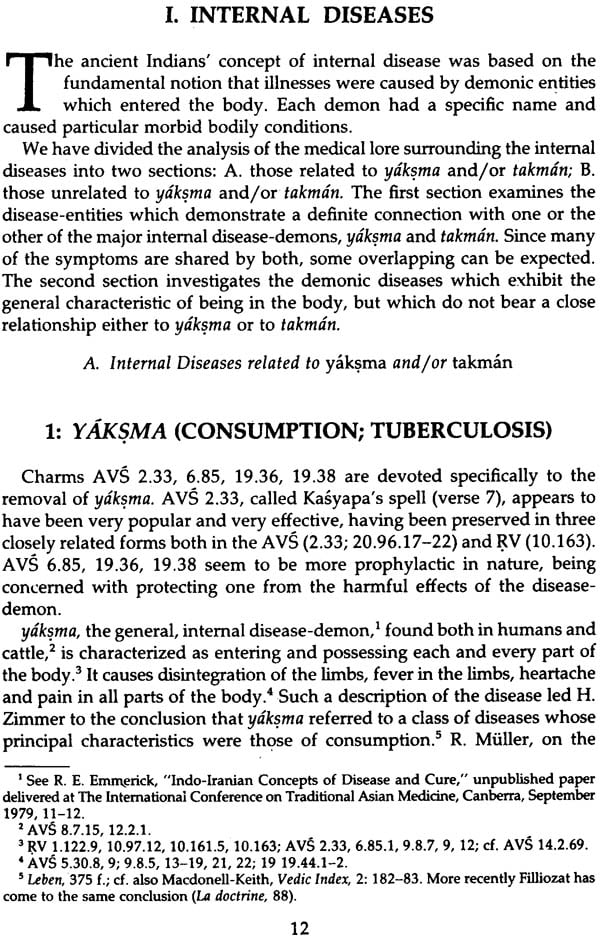
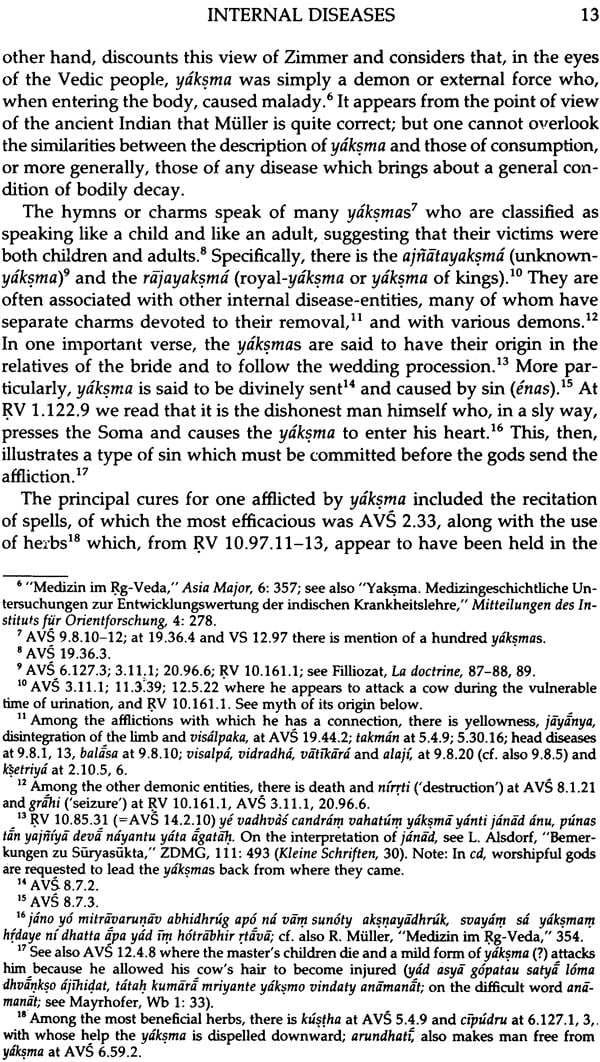
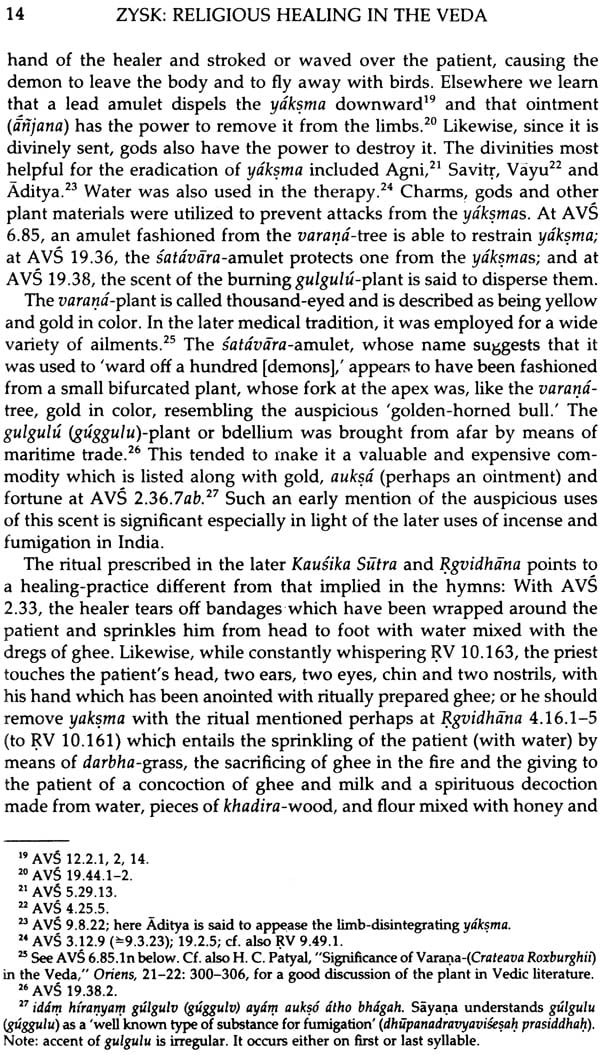
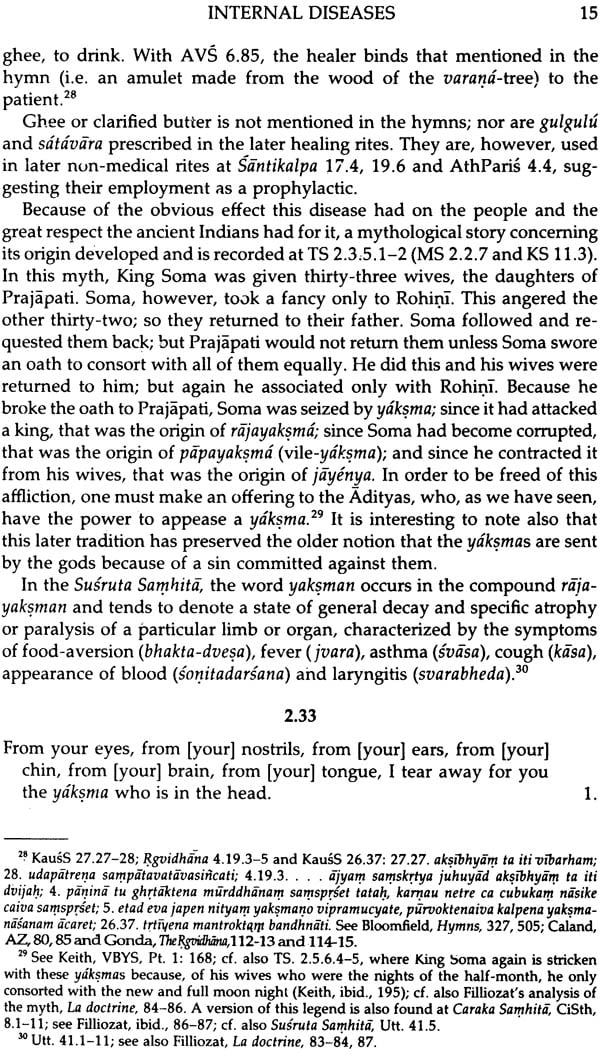
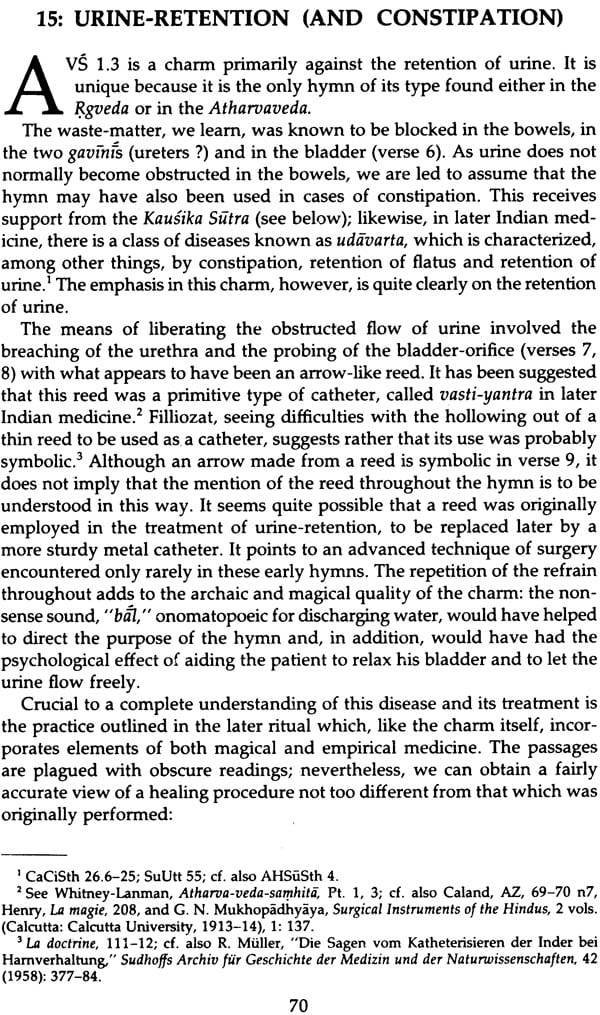
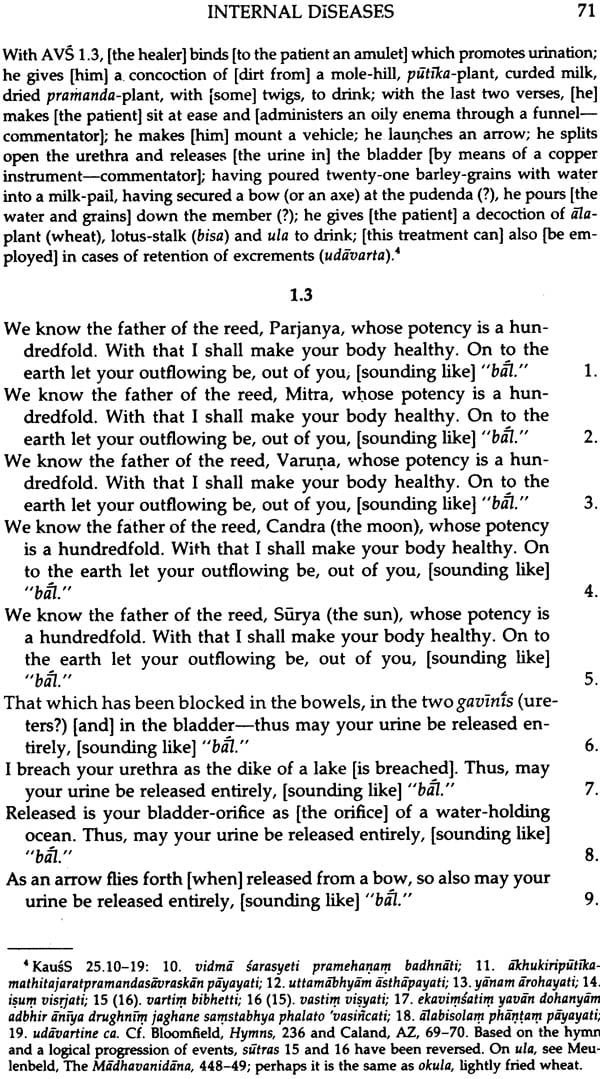
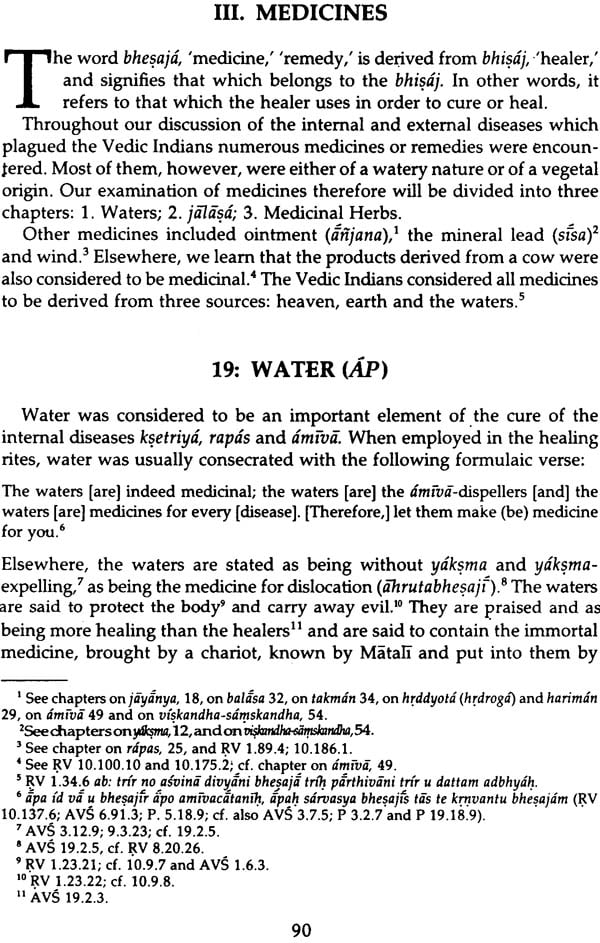
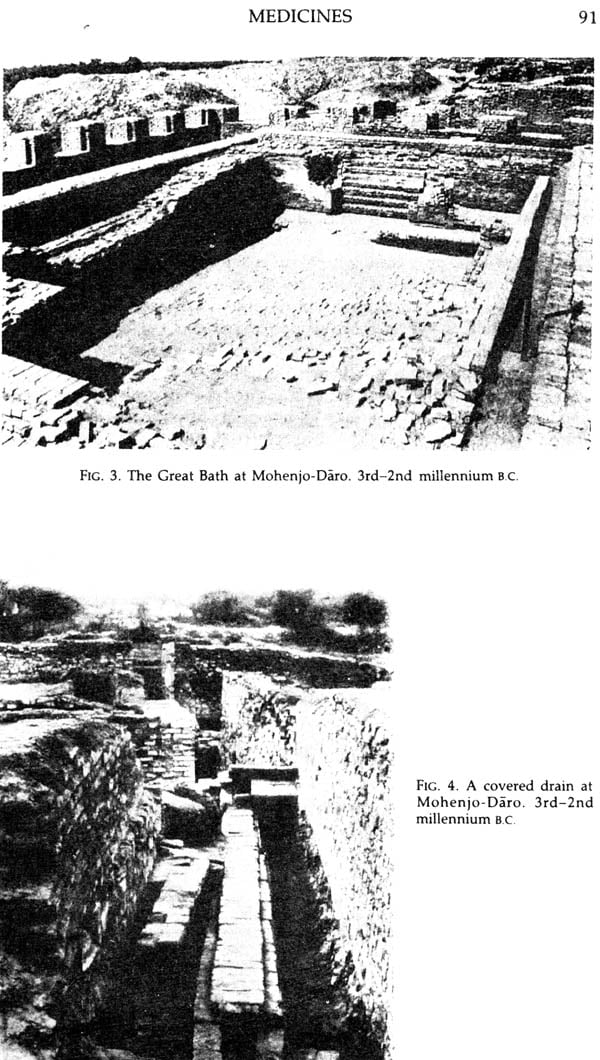
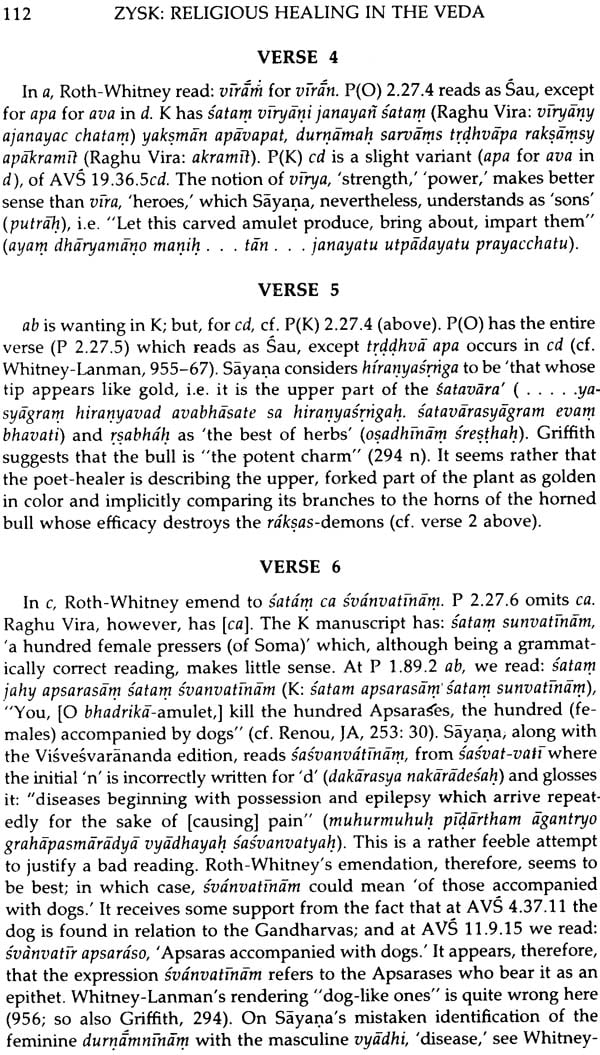
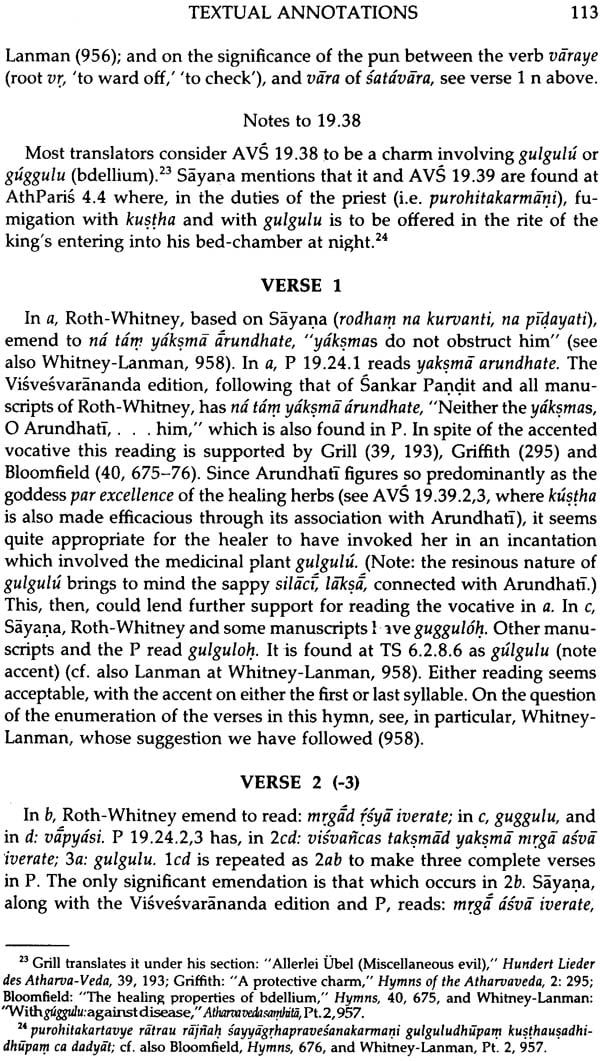
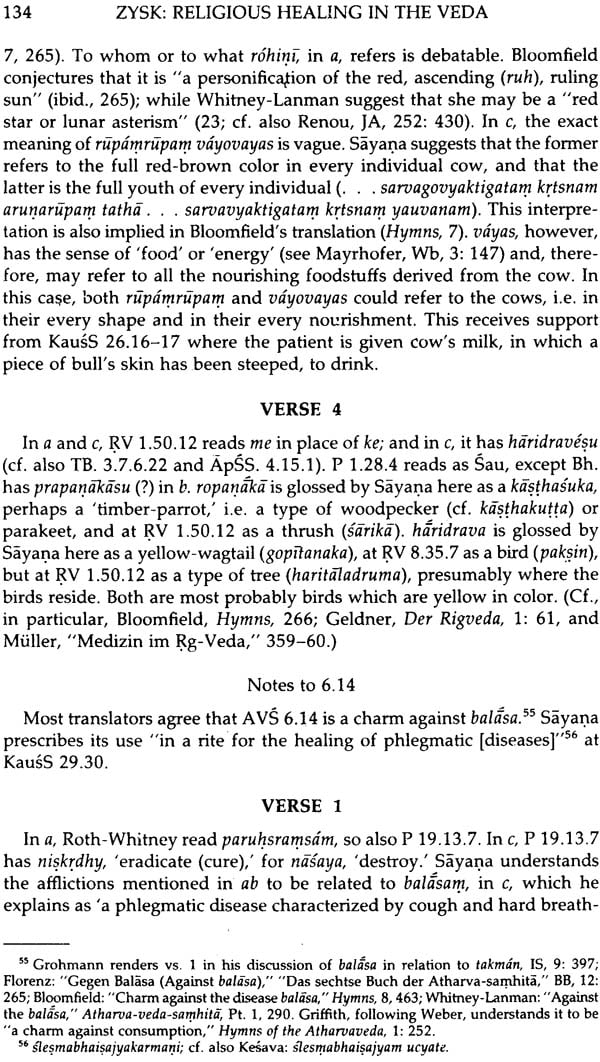
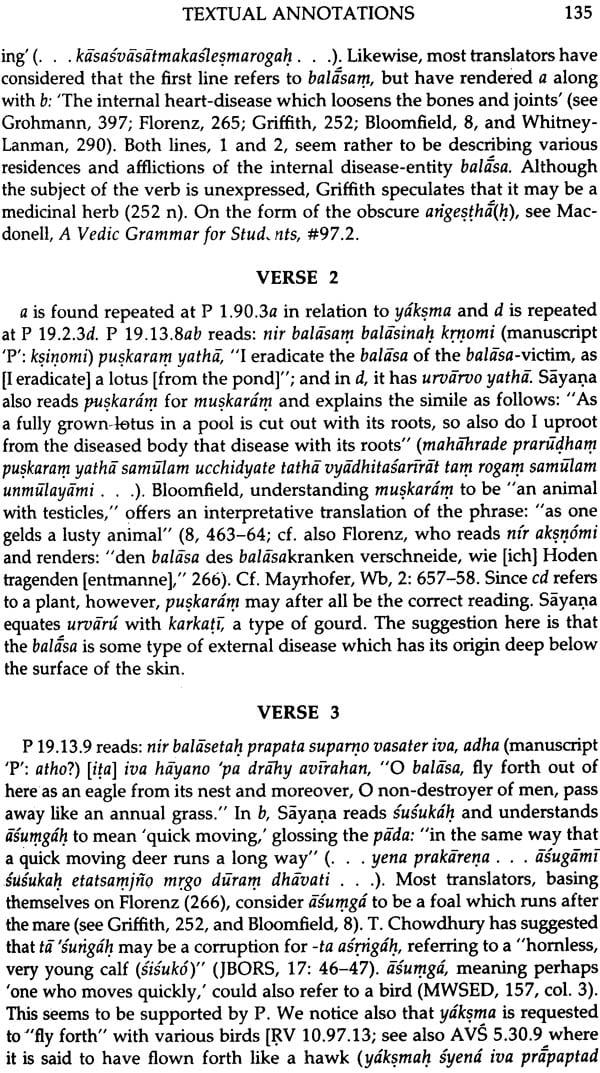
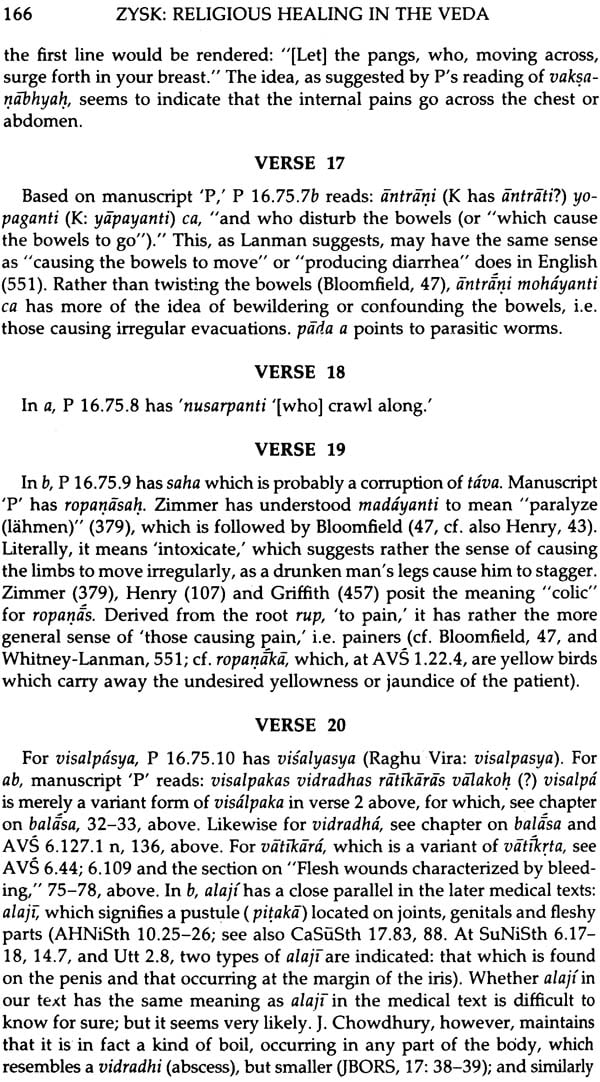
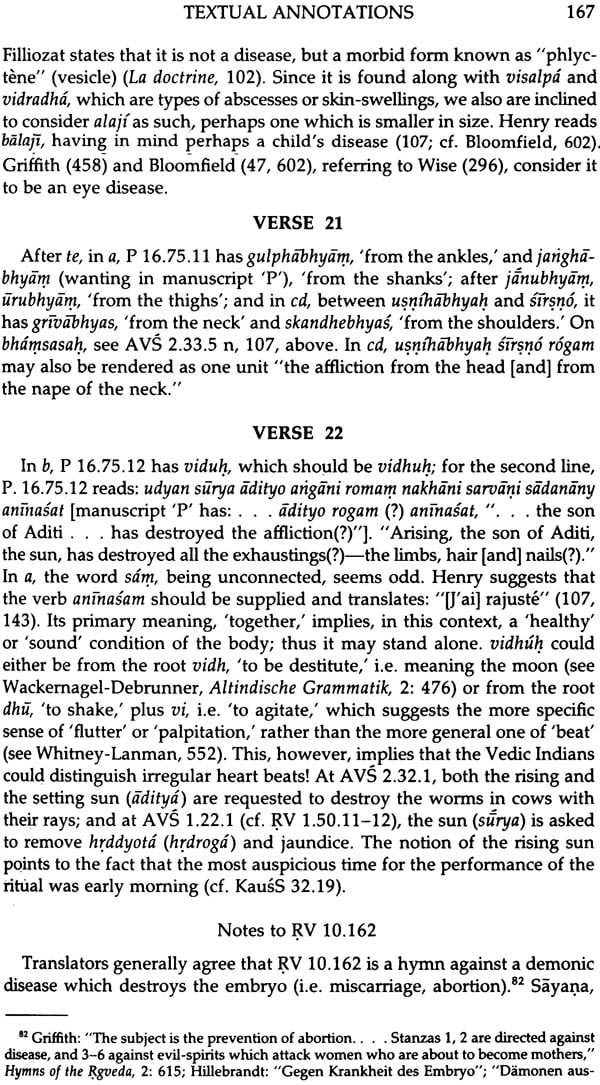
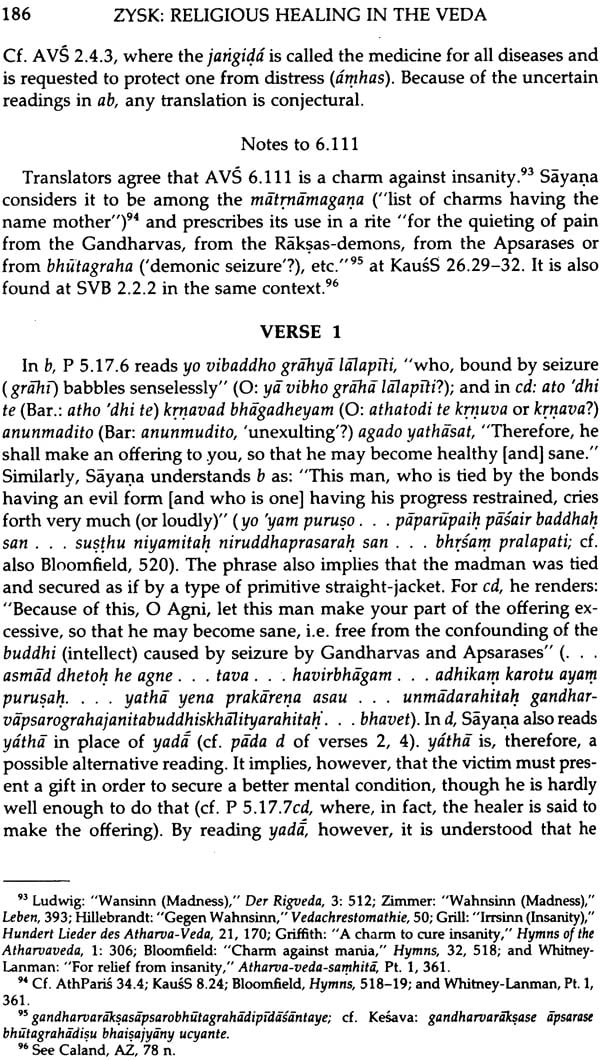
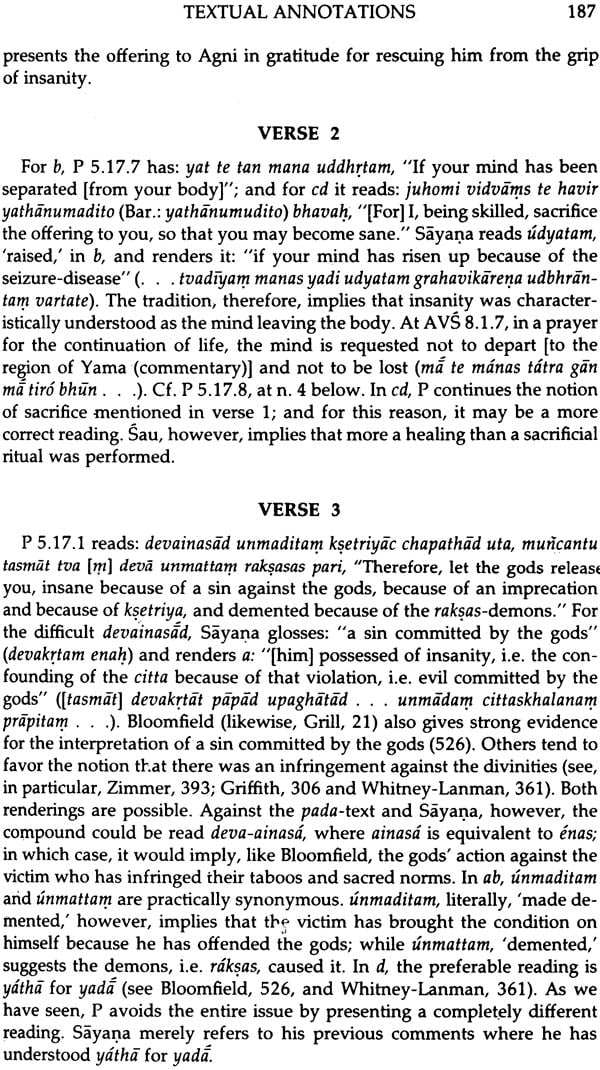
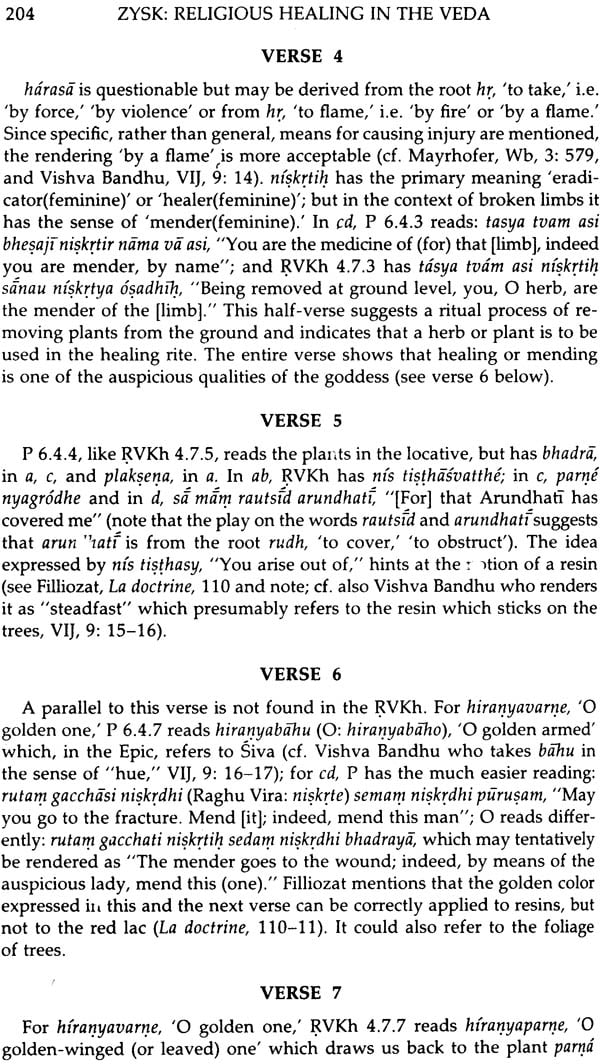
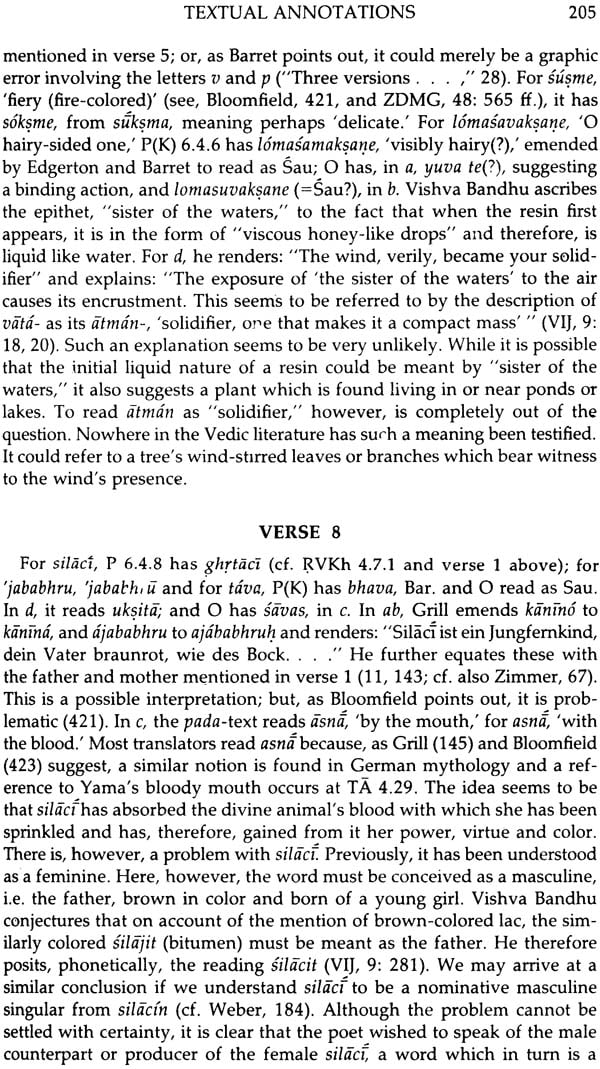
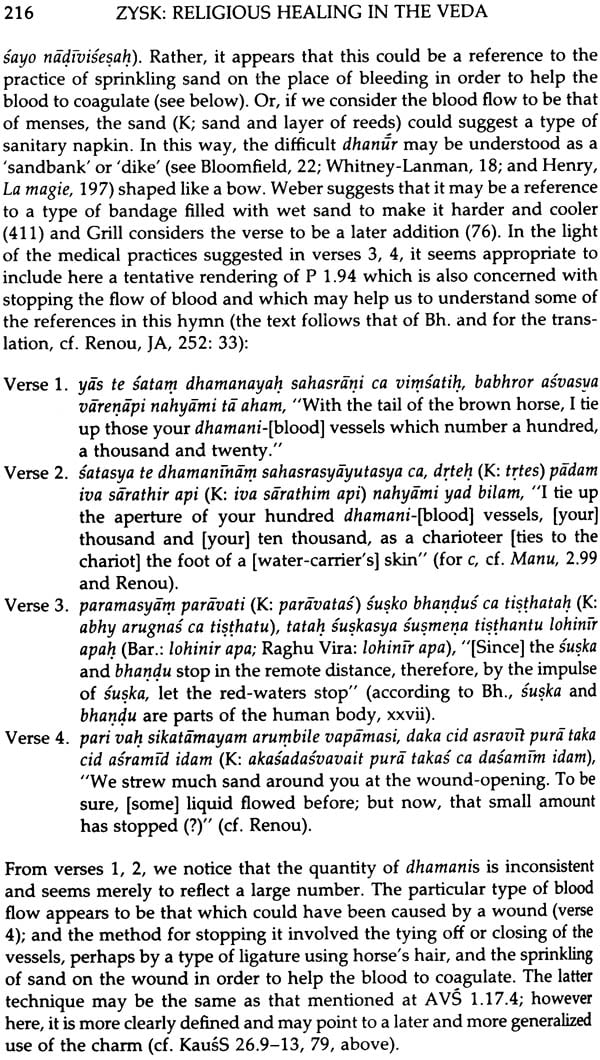
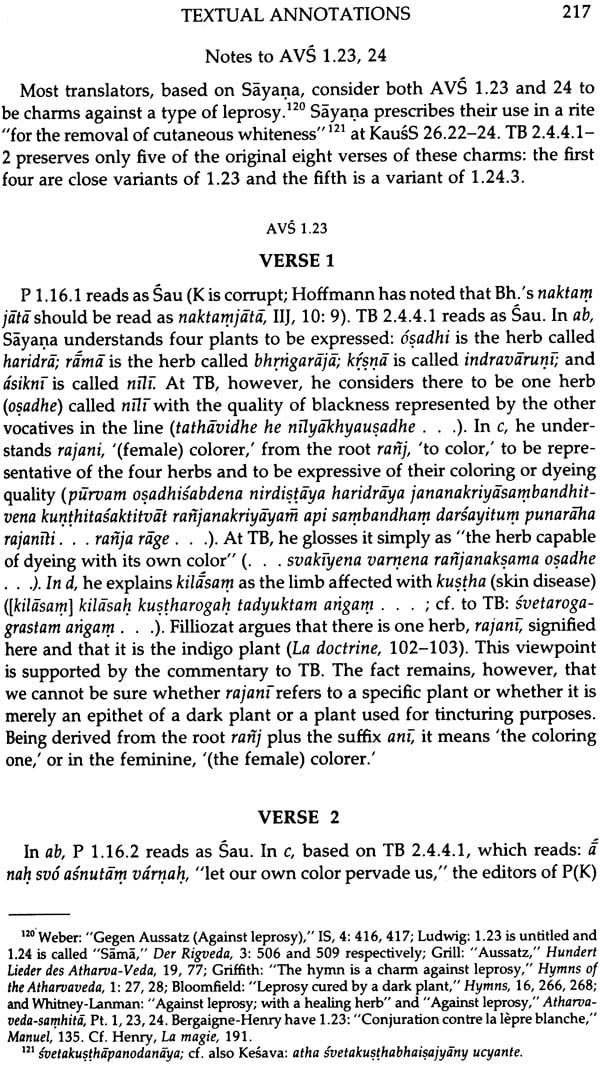
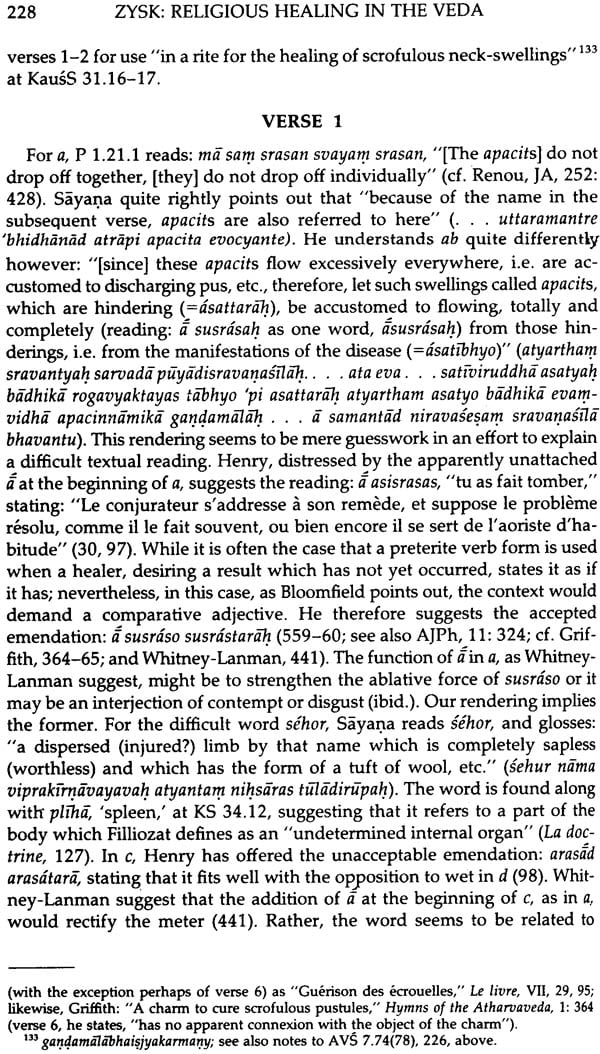
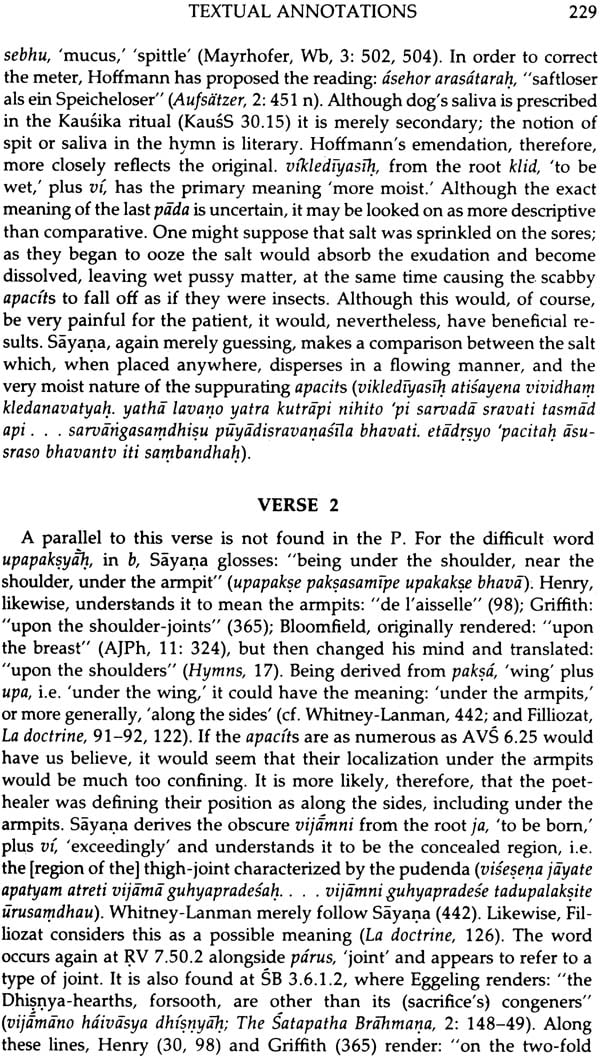
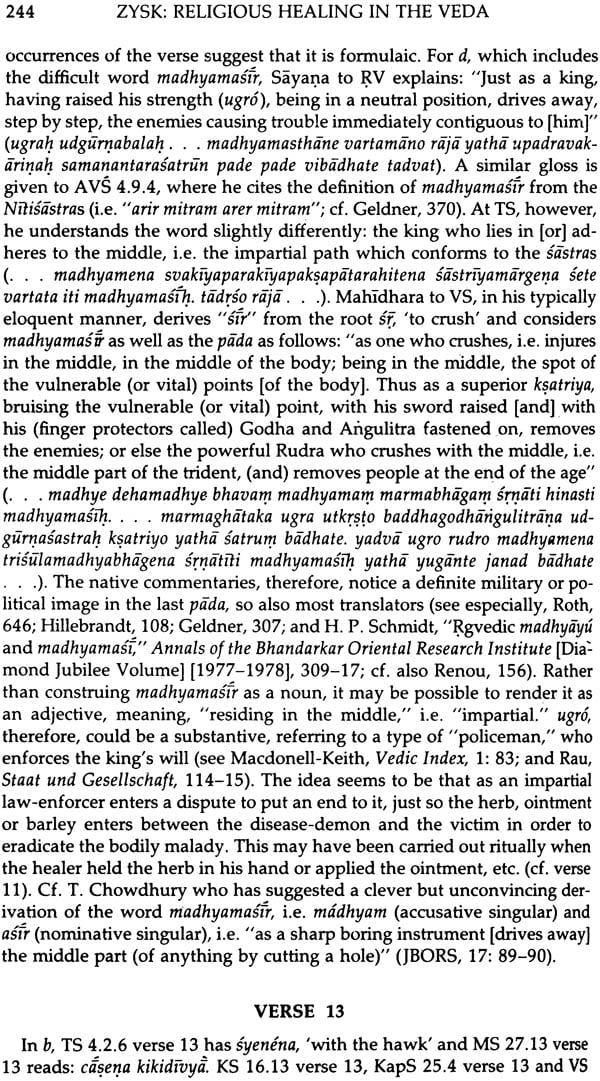
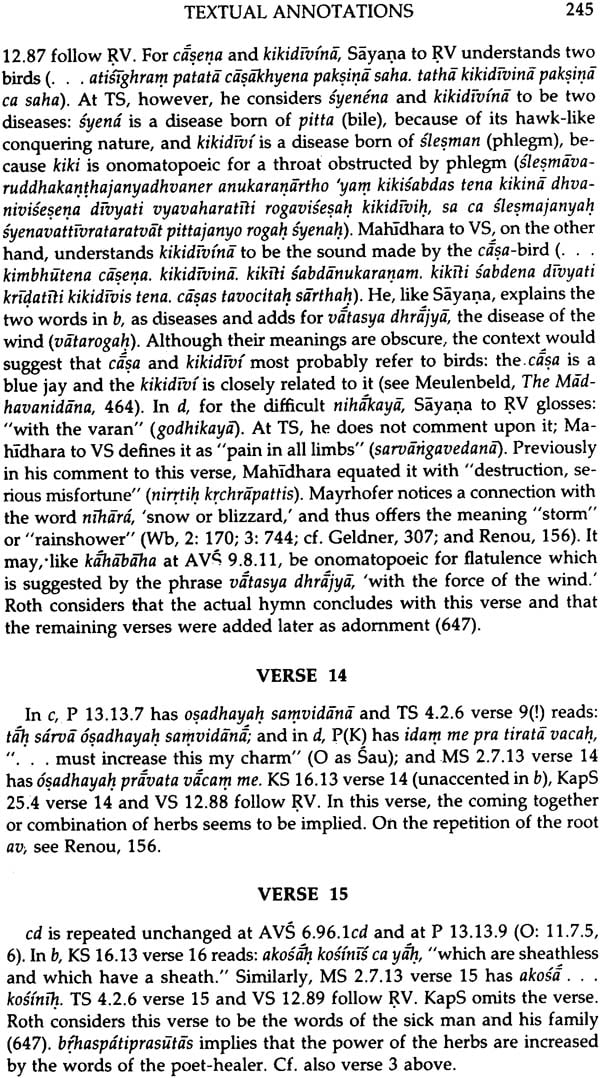
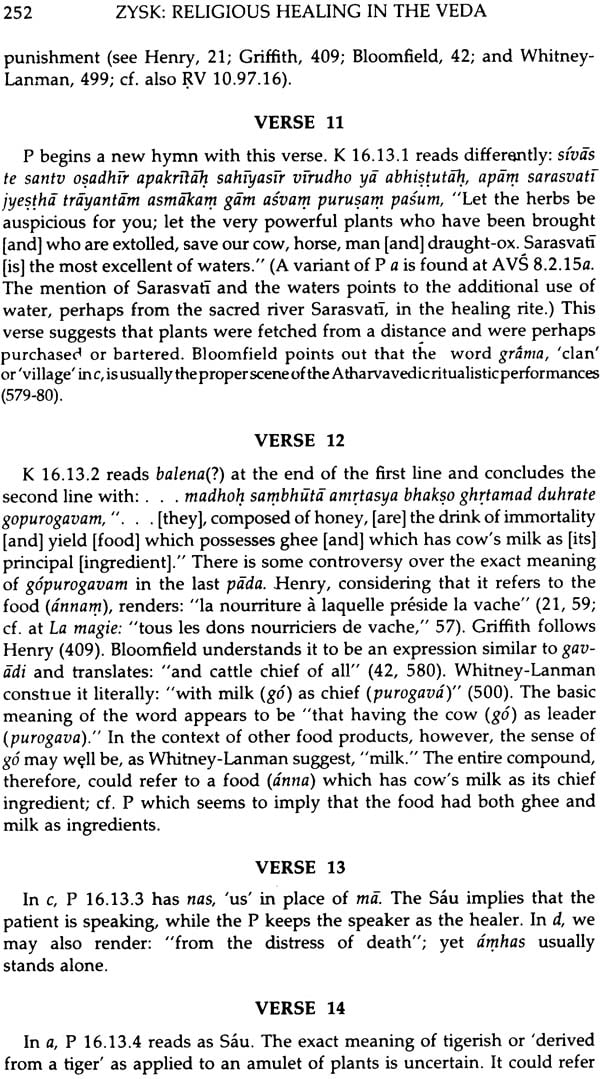
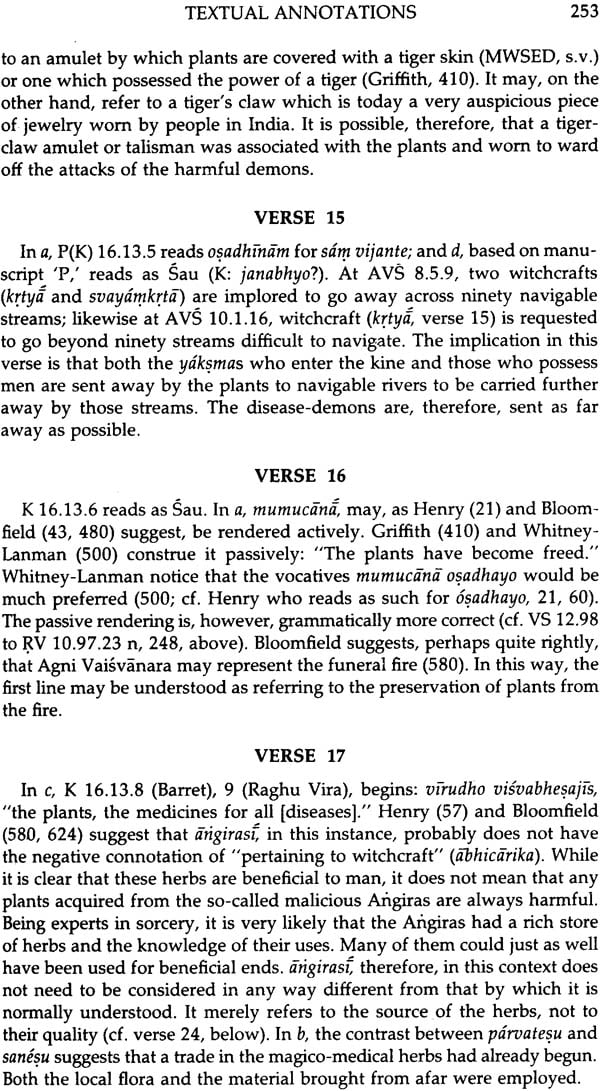
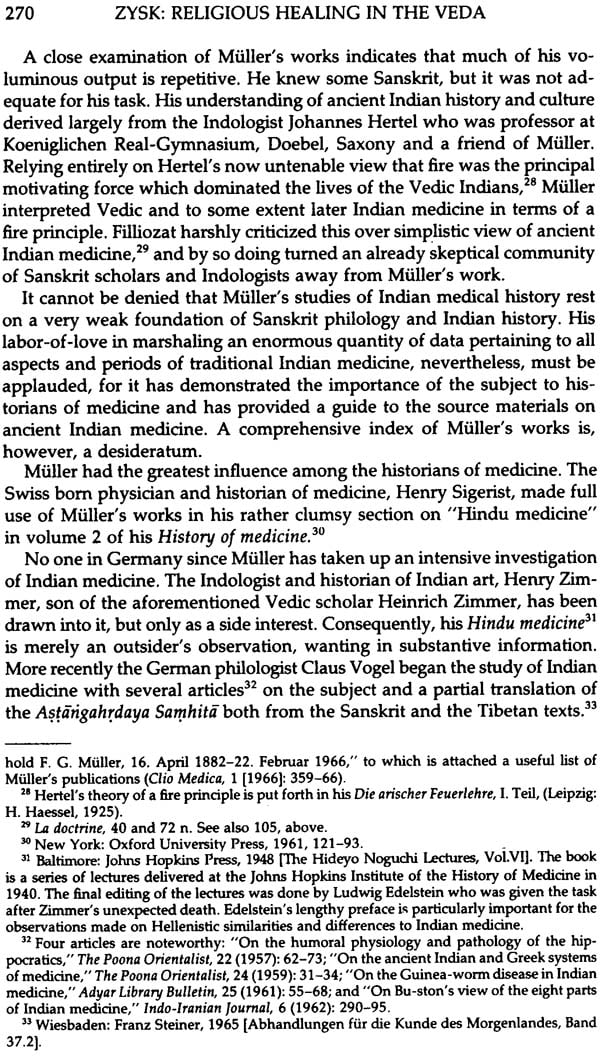
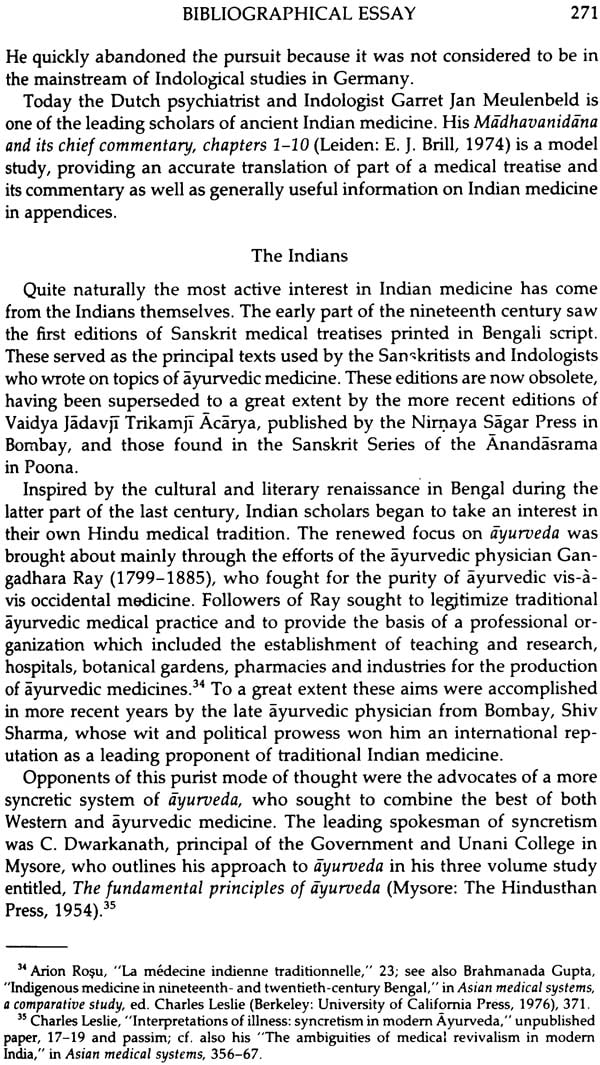
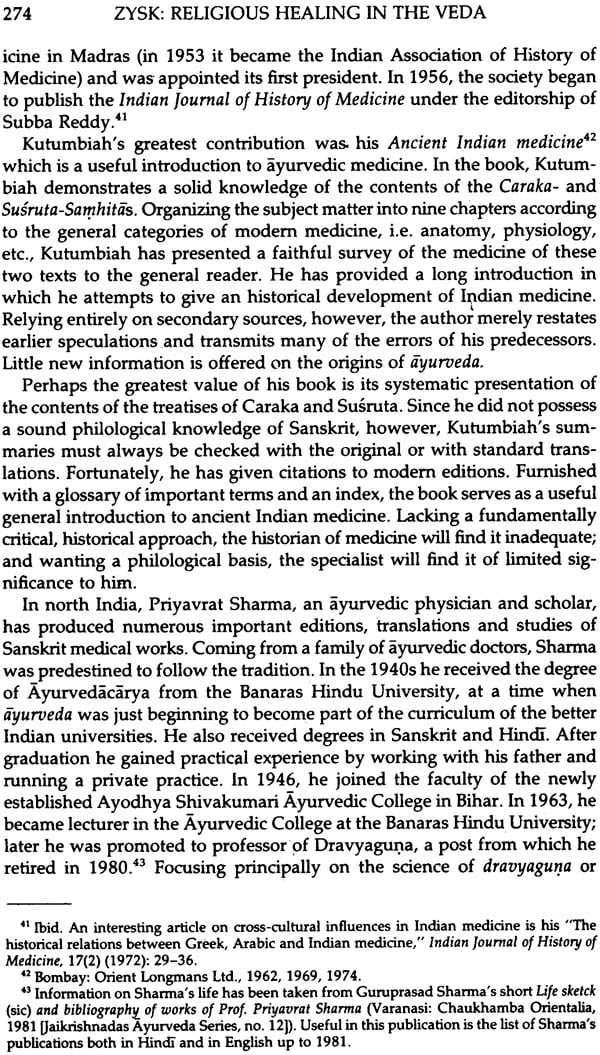
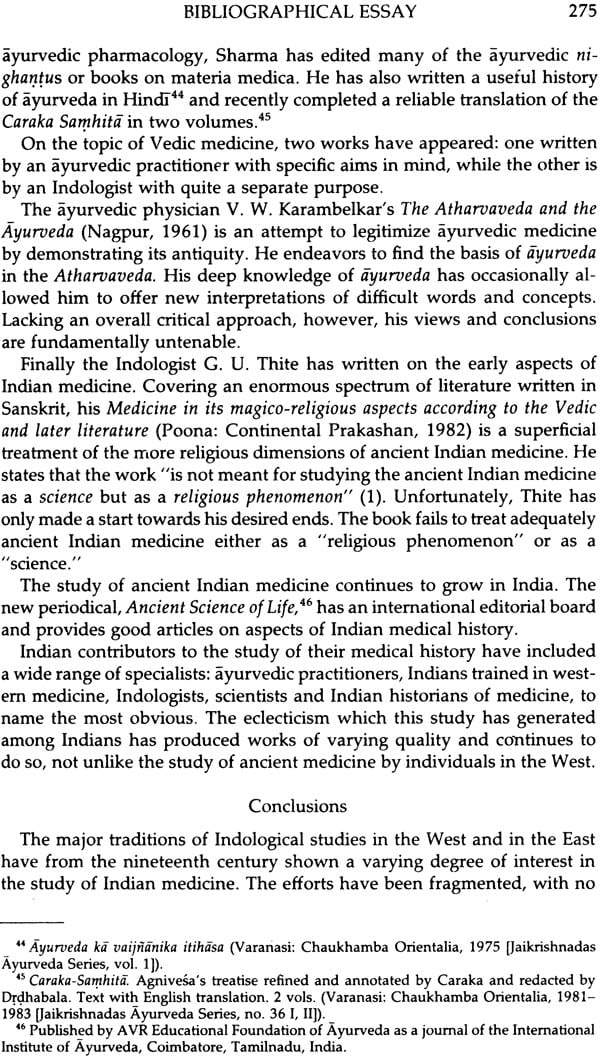
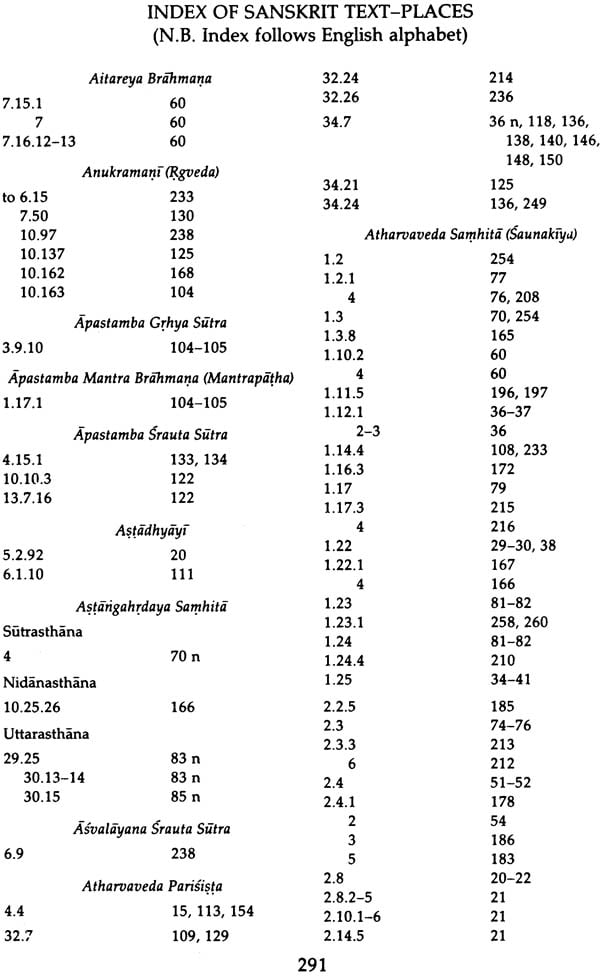
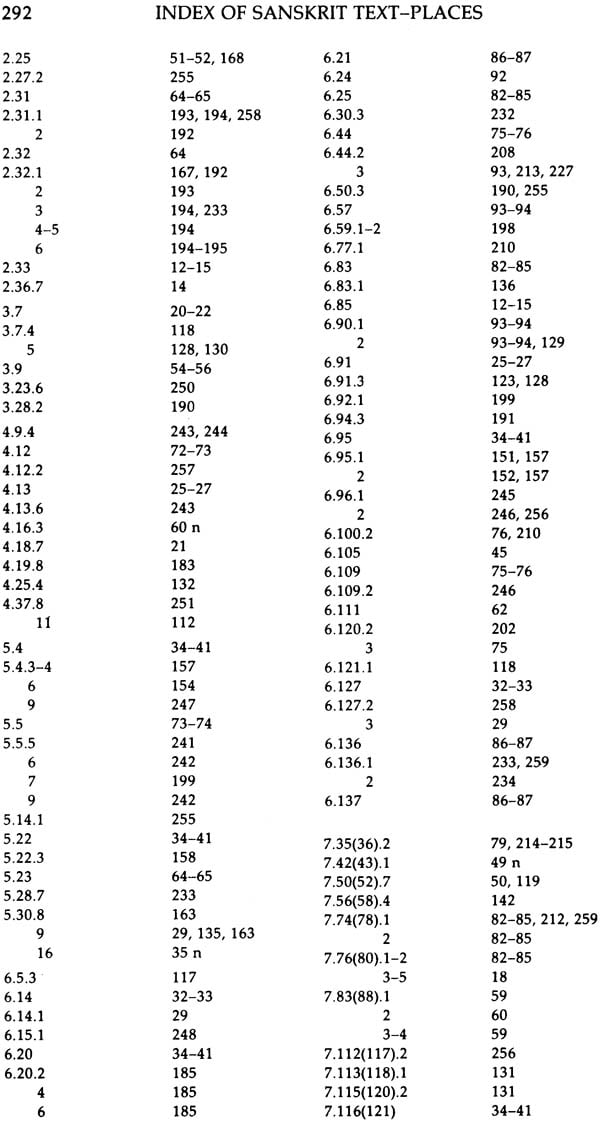

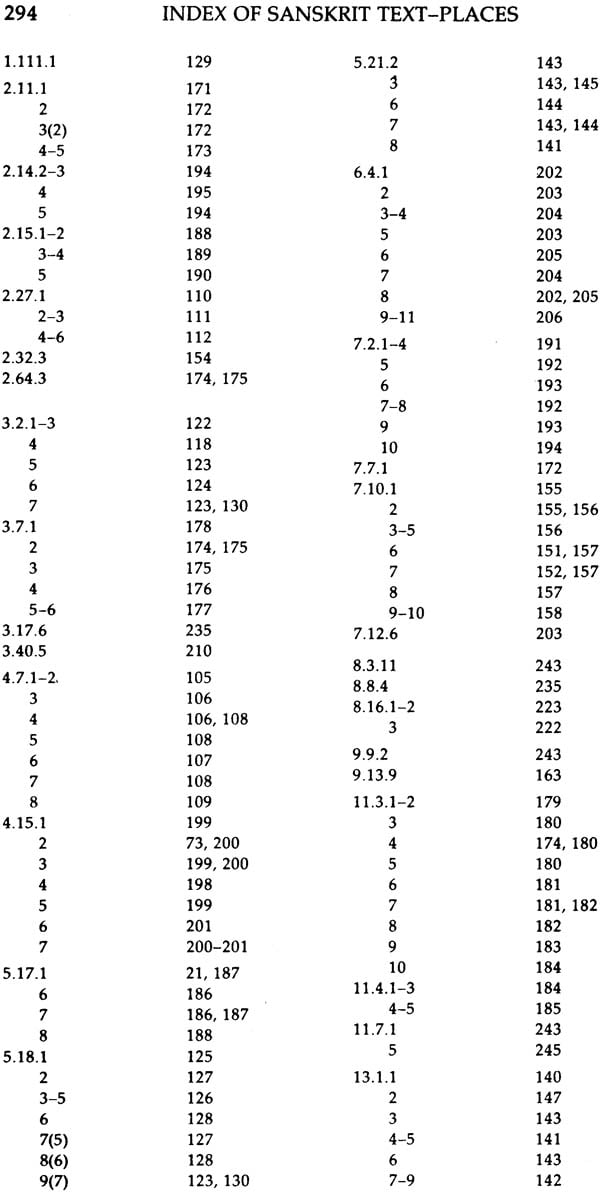
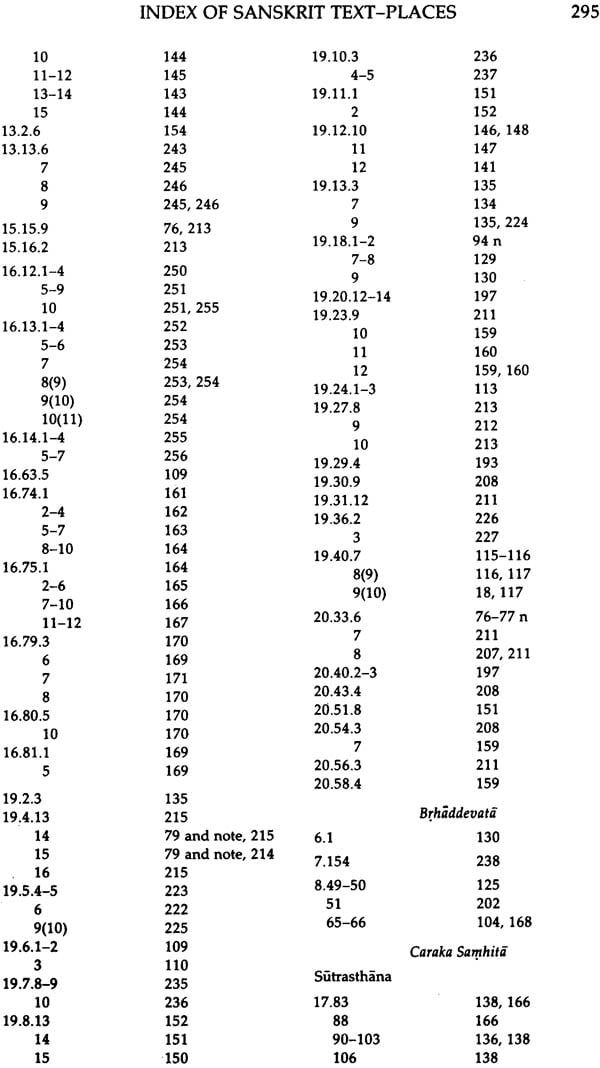
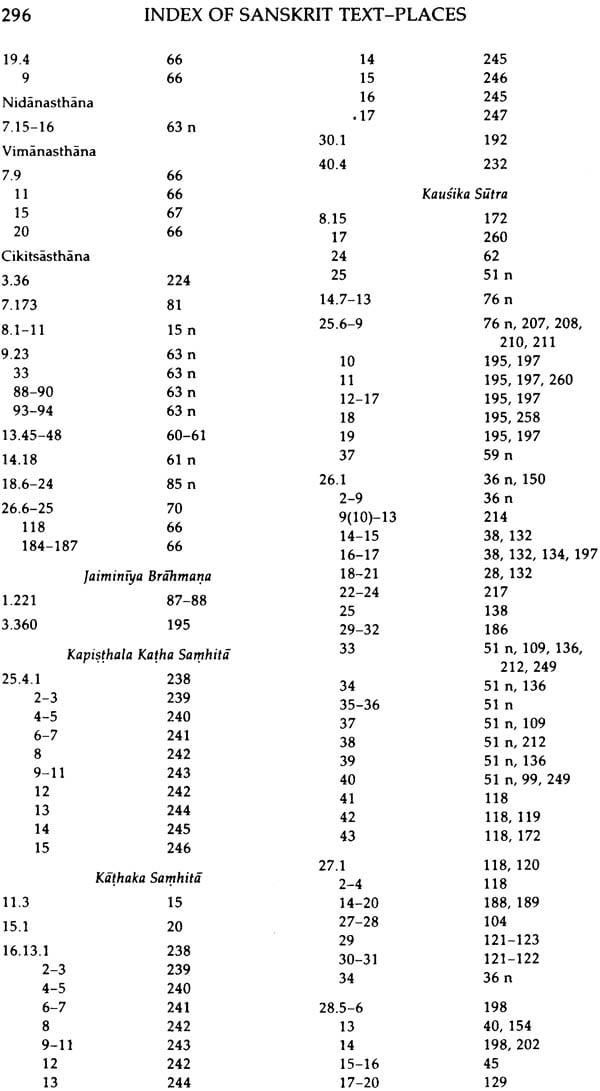
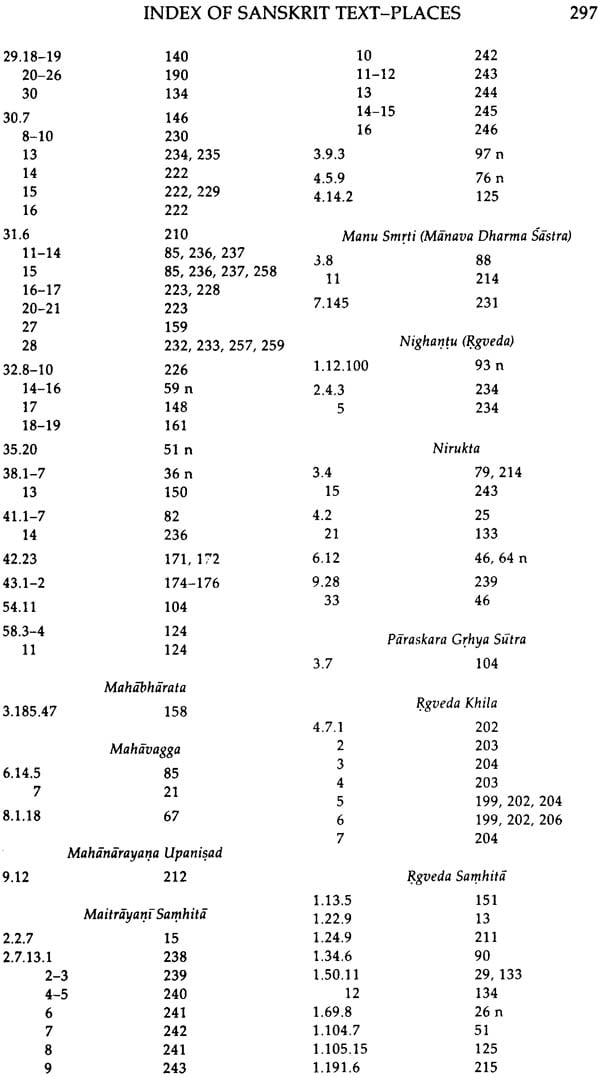
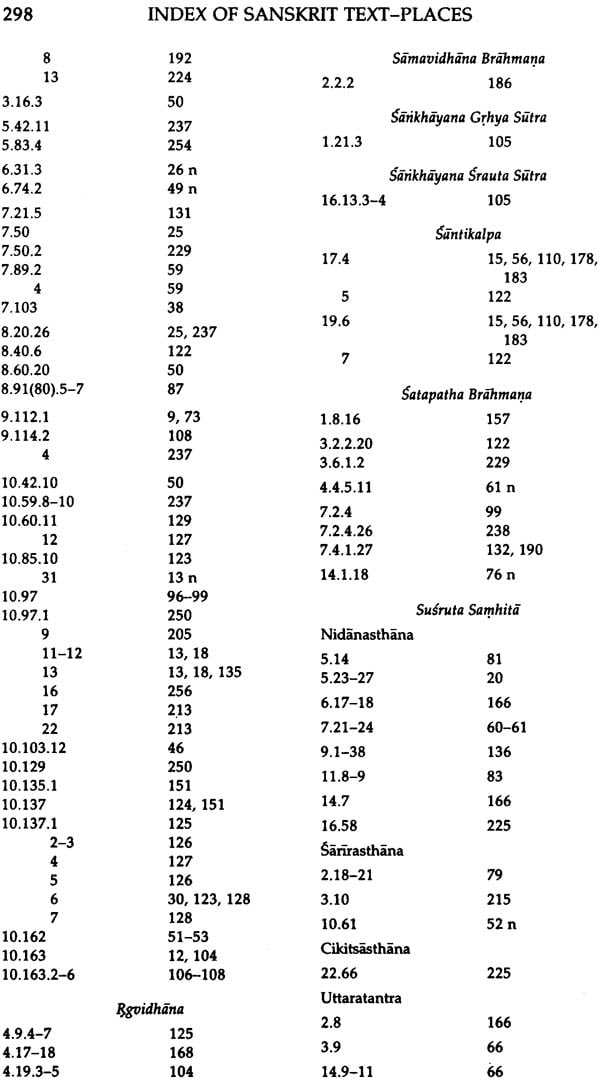
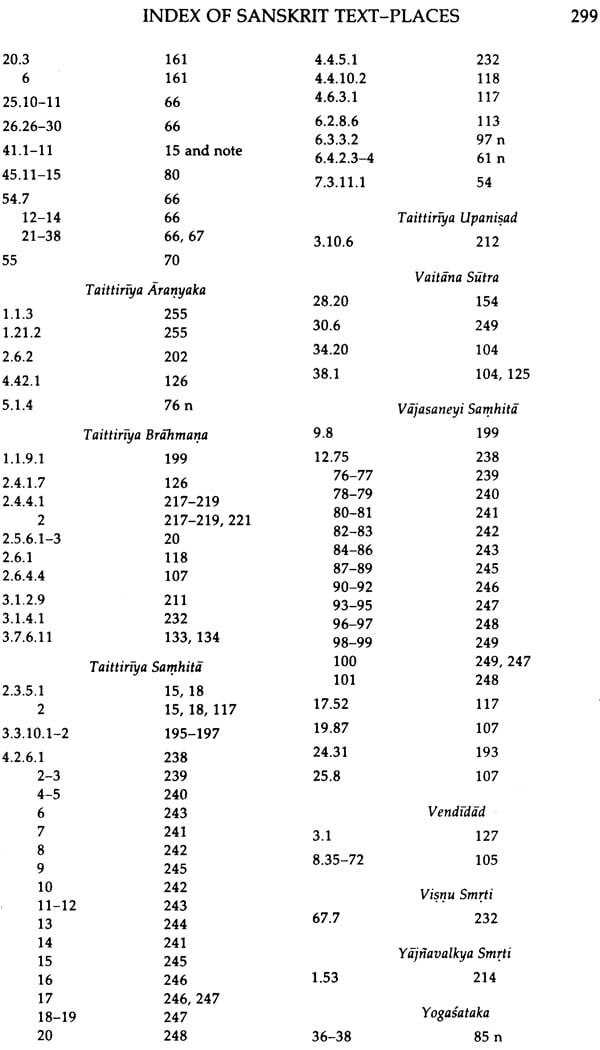
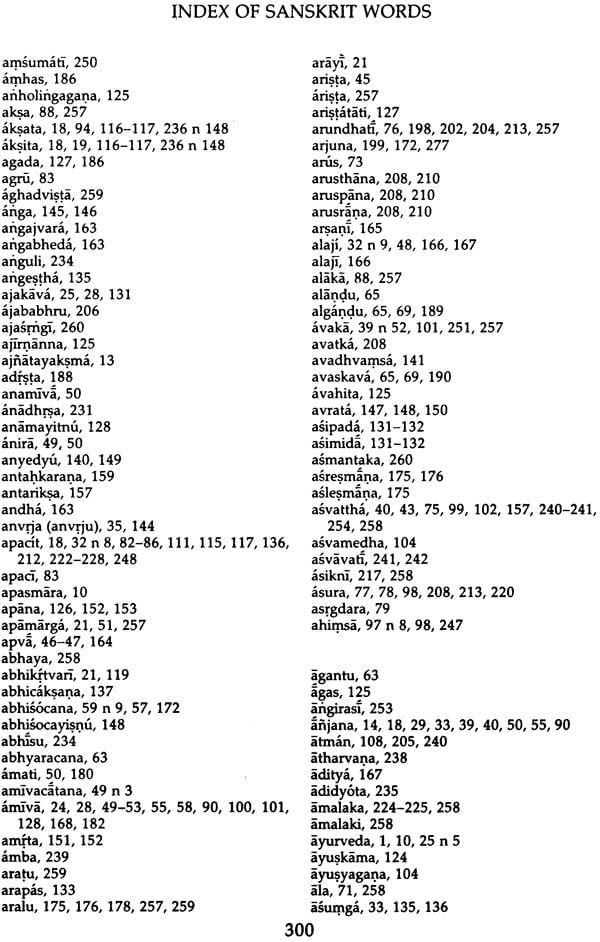
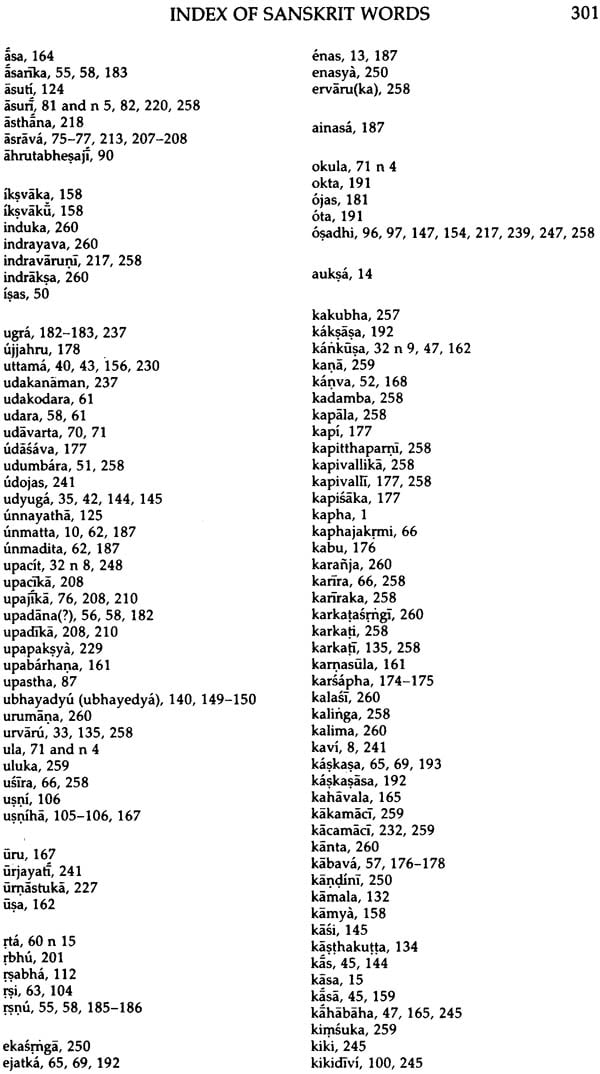
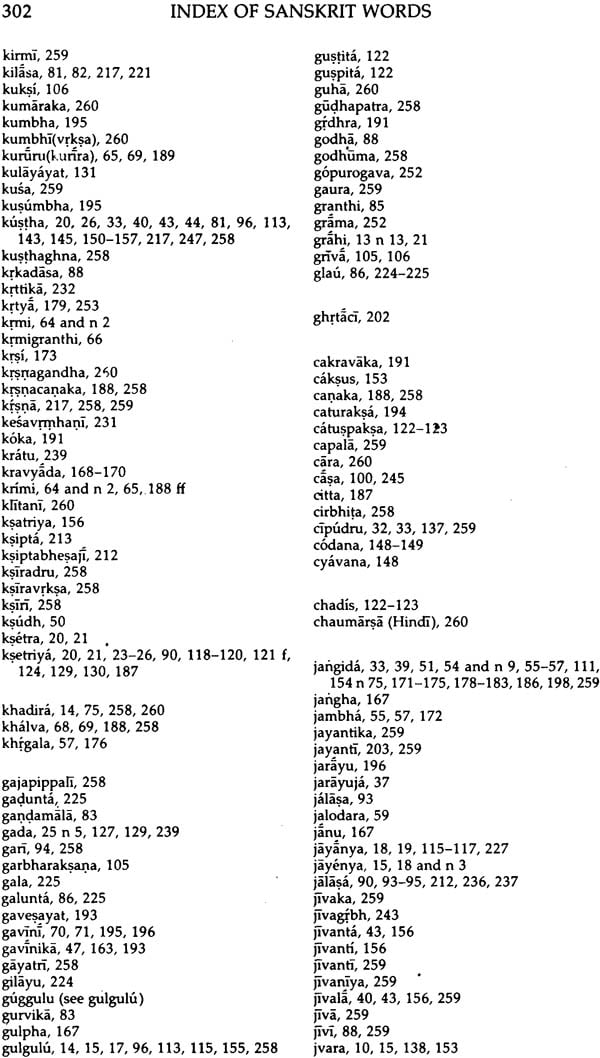
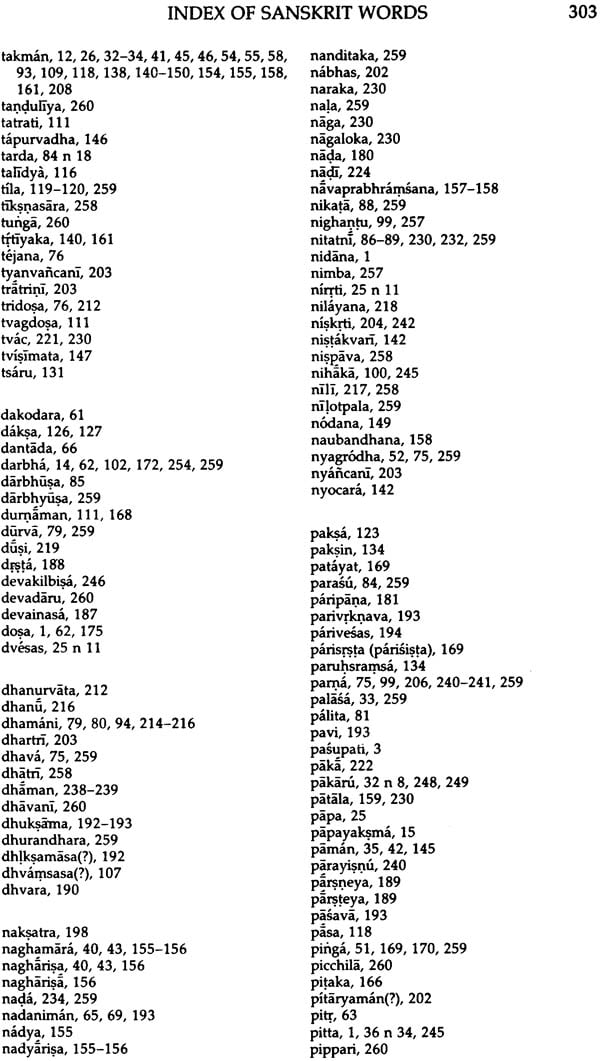
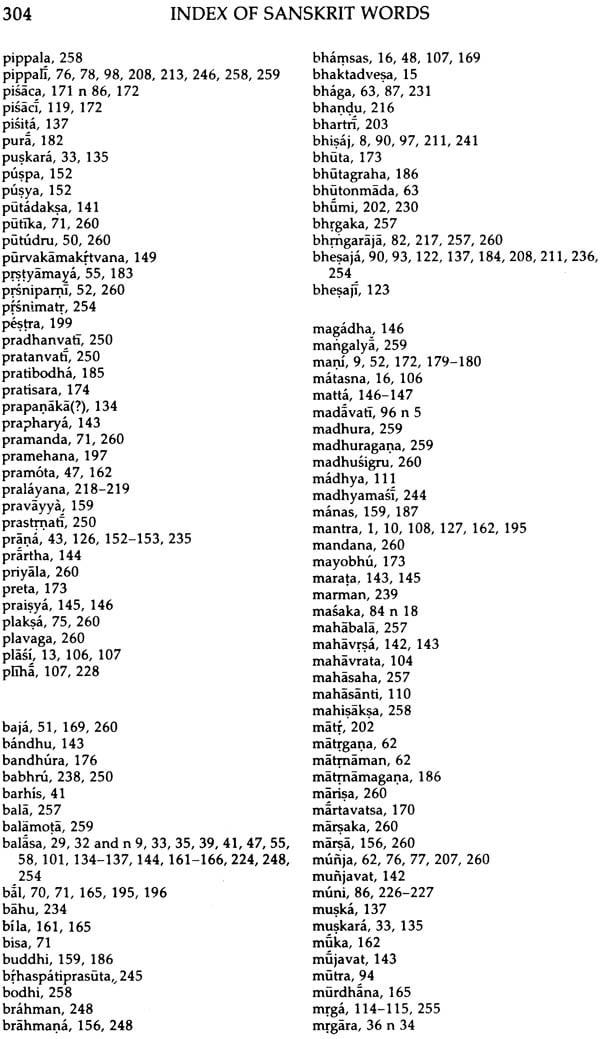
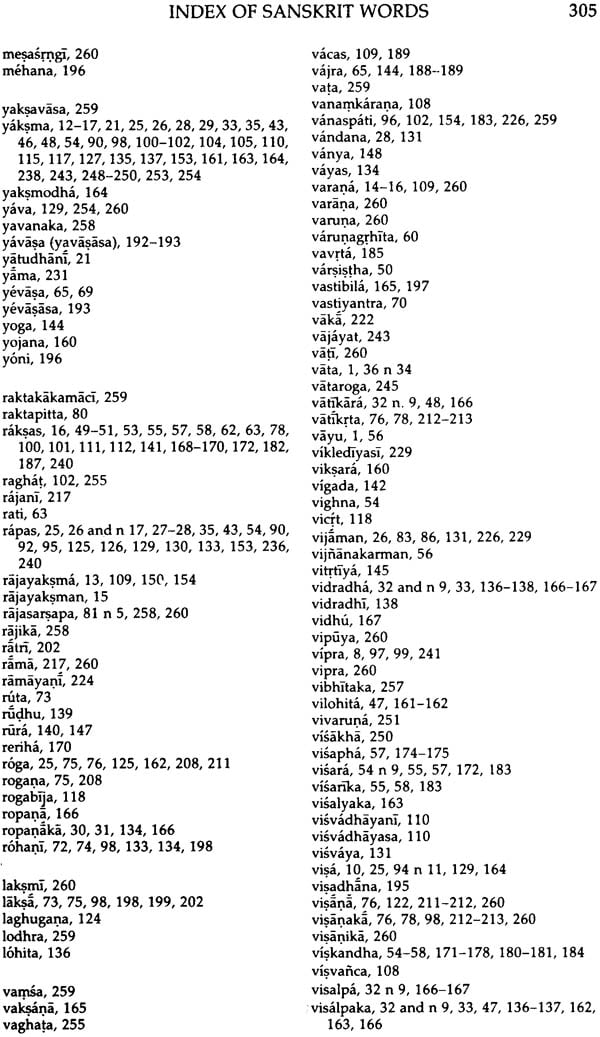
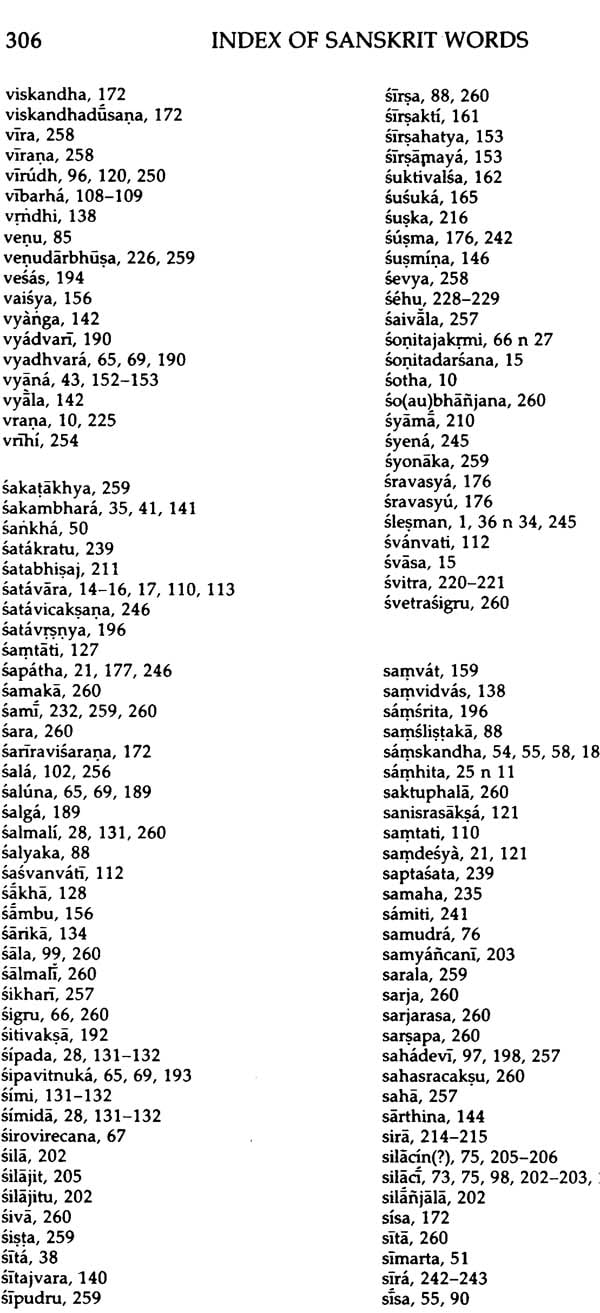
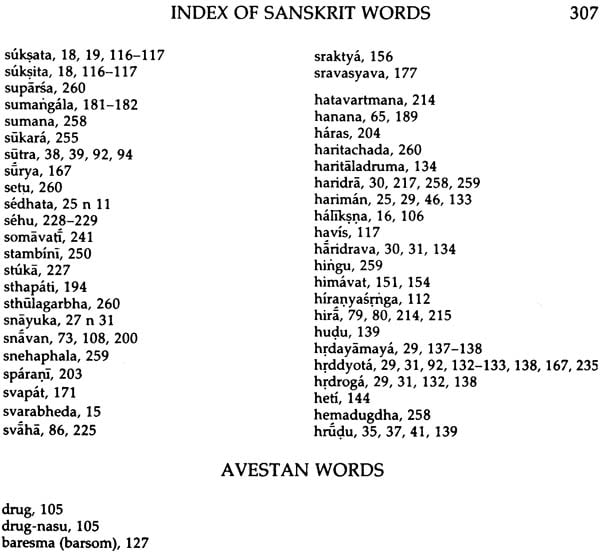
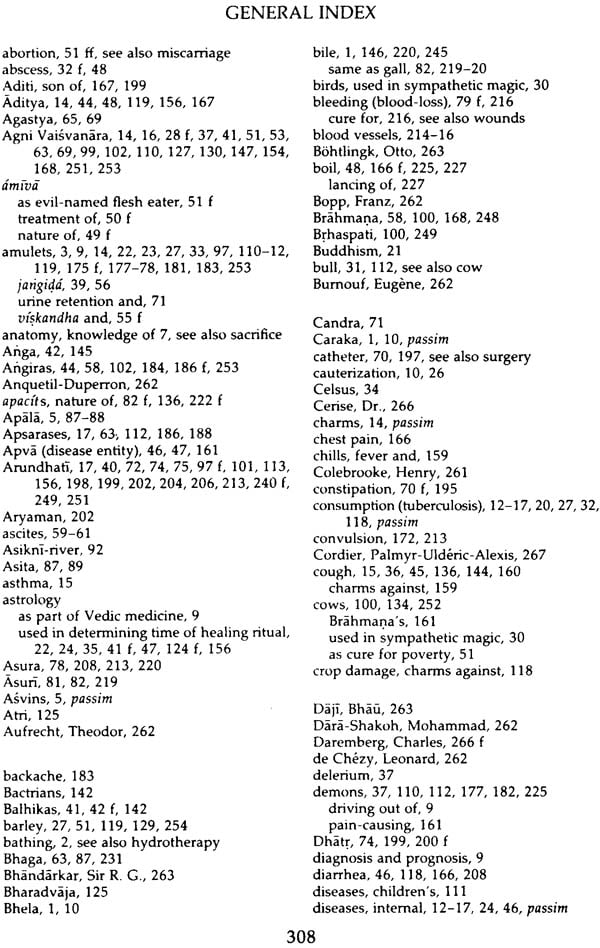
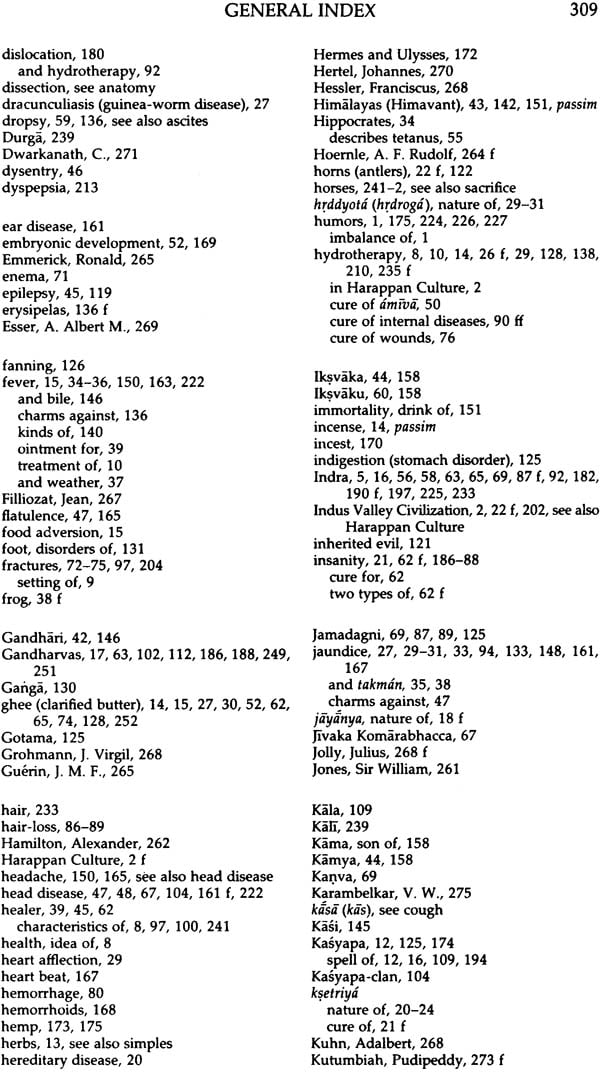
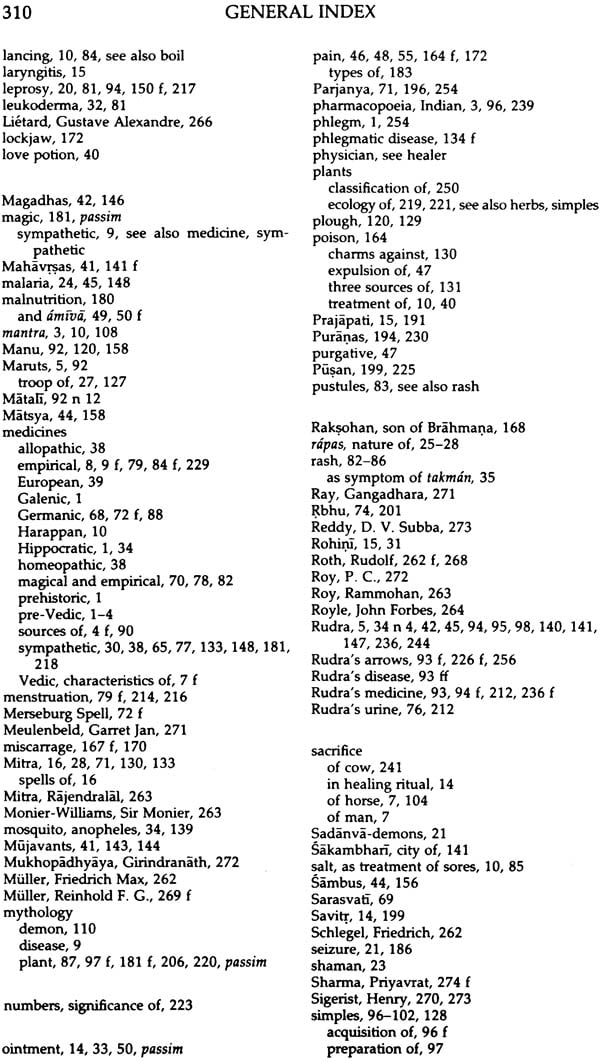
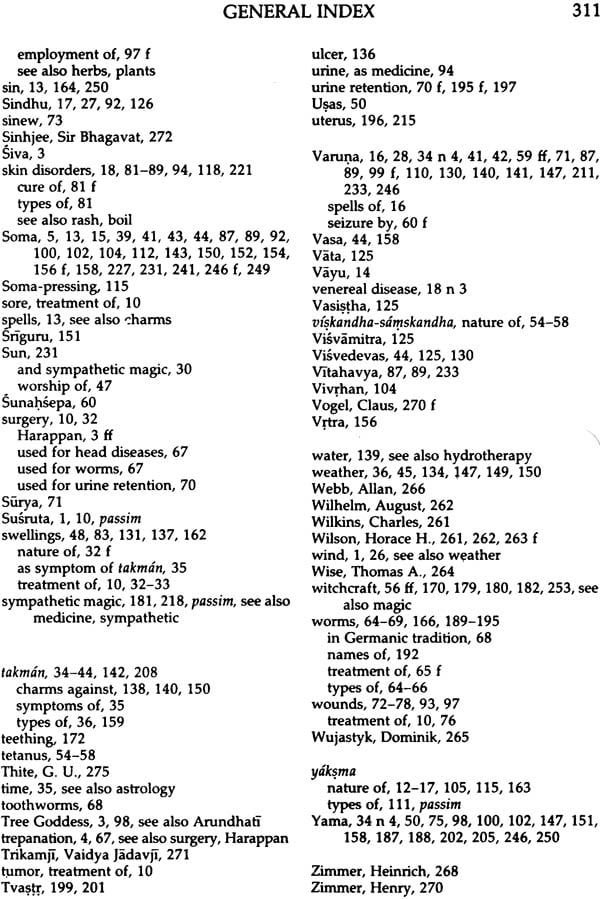
Of Related Interest :
Each of us a Healer: Medicine Buddha and the Karma of Healing (Article)
Oriental Medicine Gallery (Paintings)
Medicine and Herbs Gallery (Books)
The Dharma of Healing (Brass Statue)





